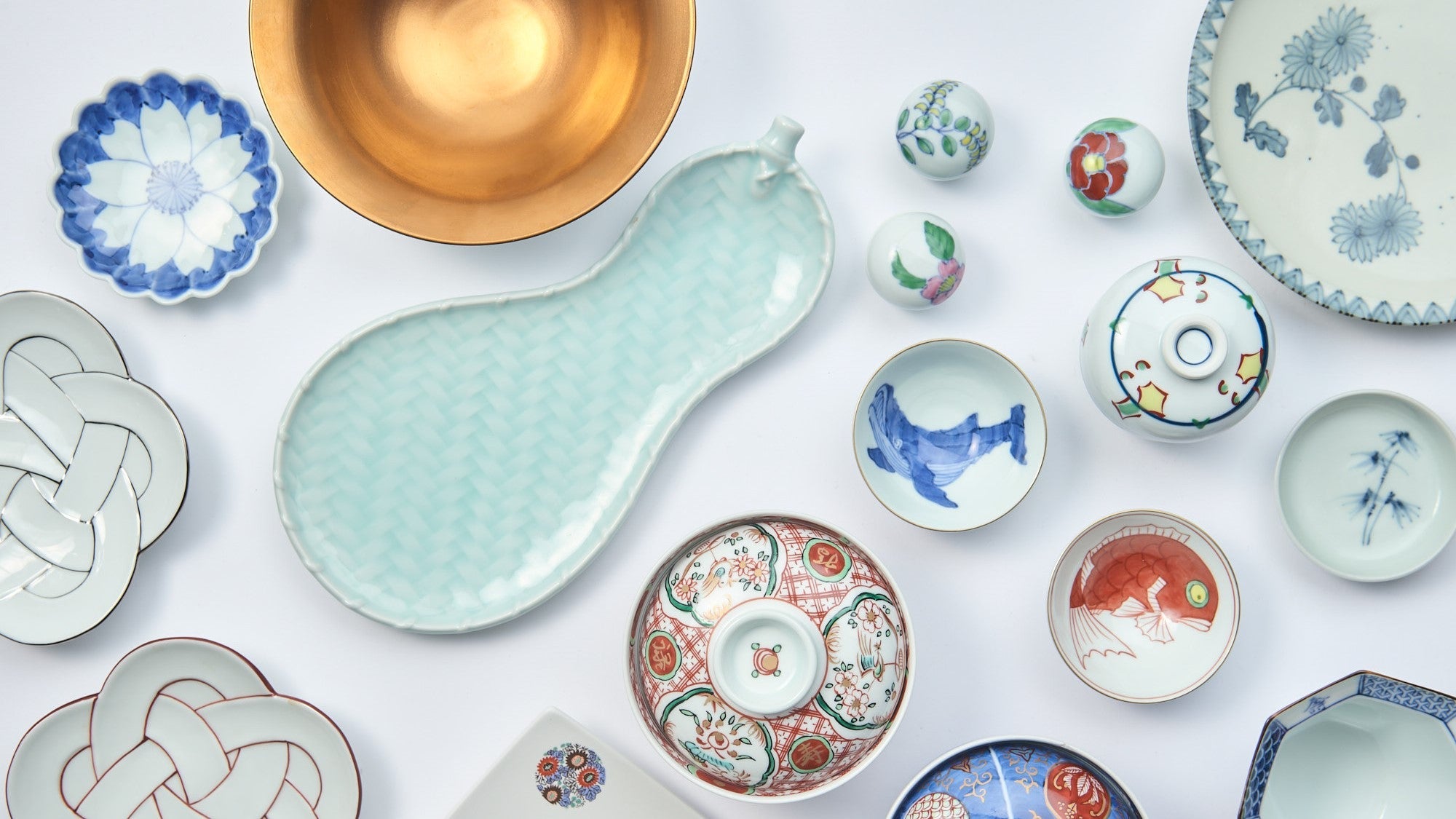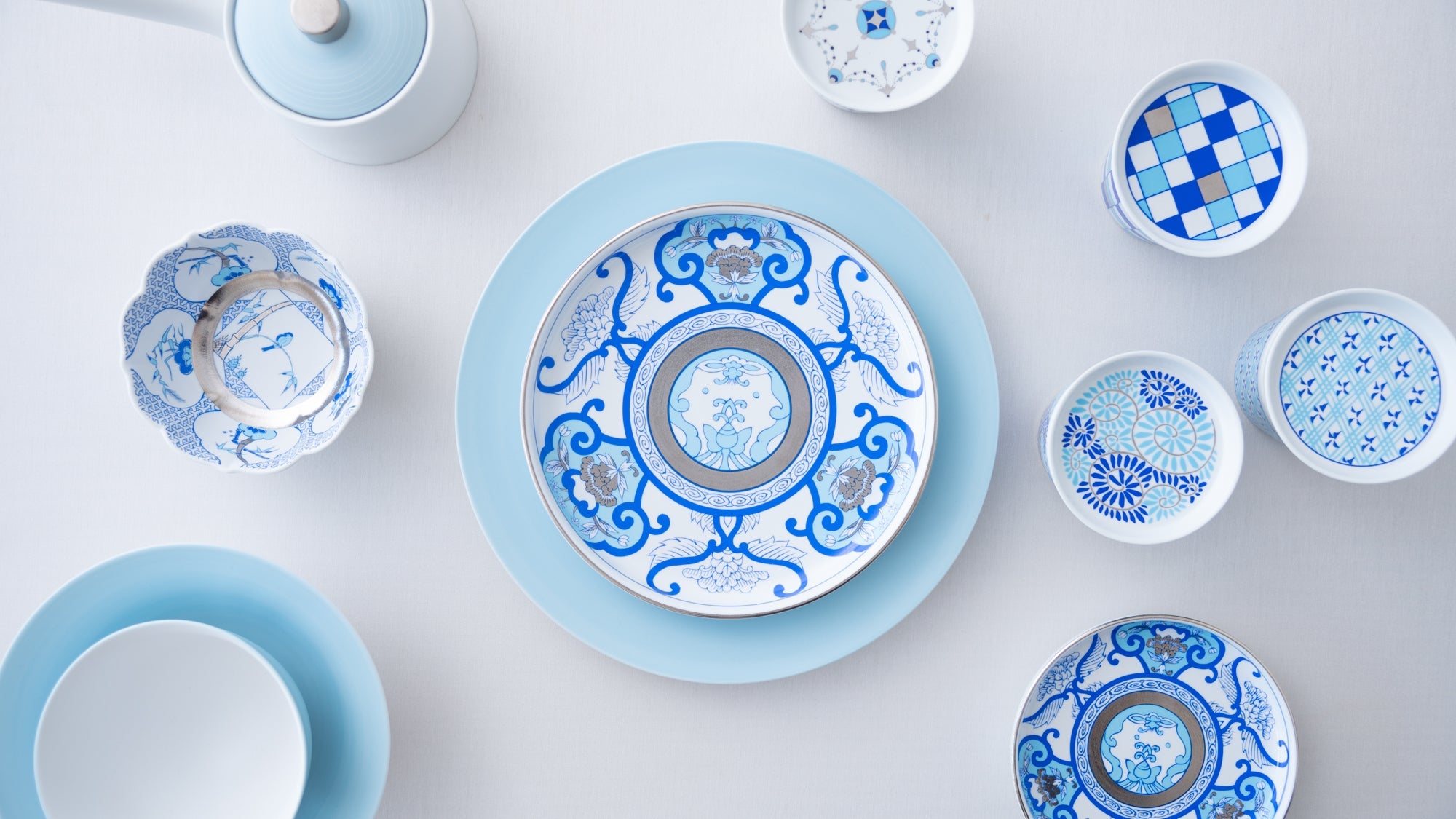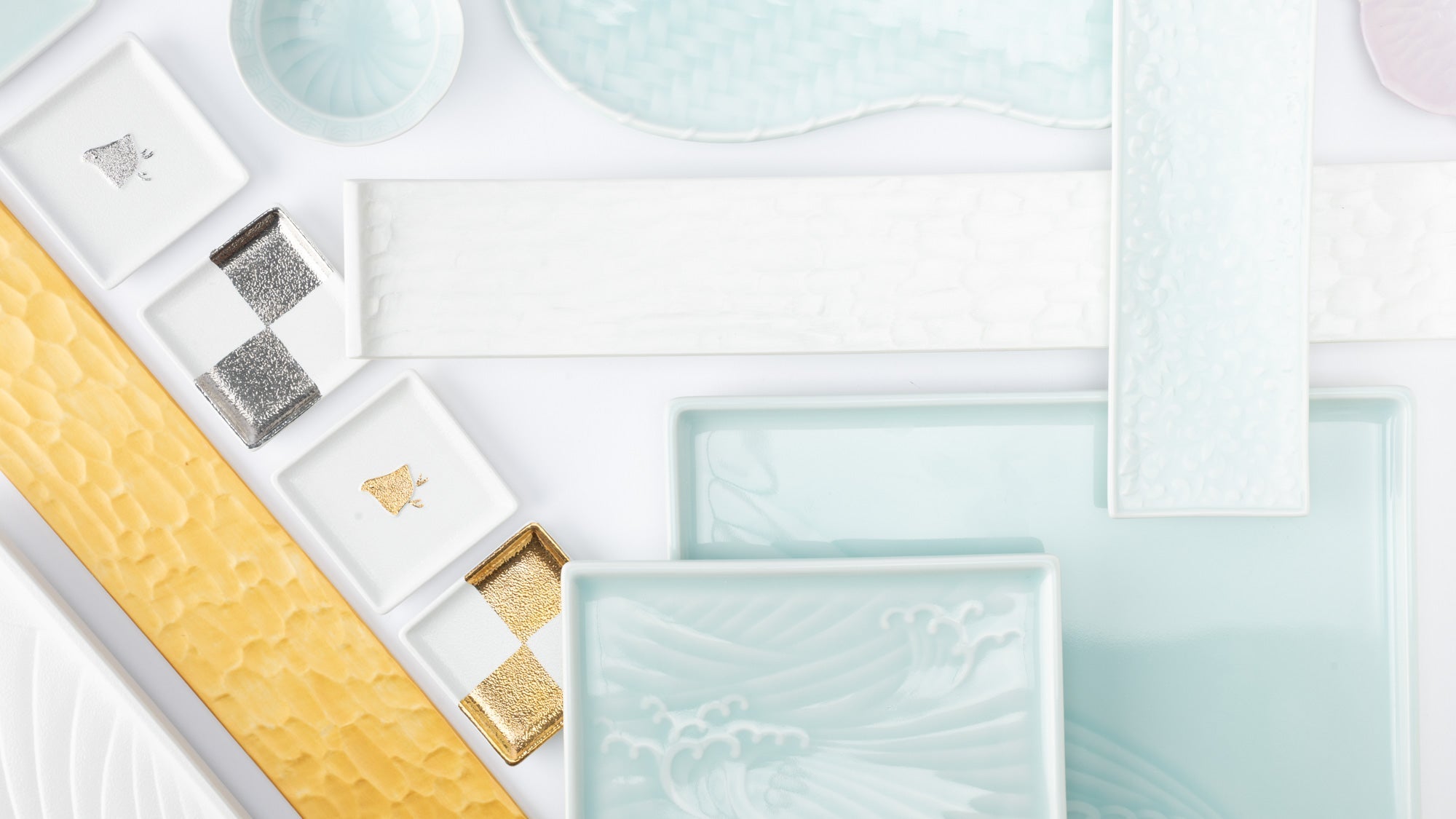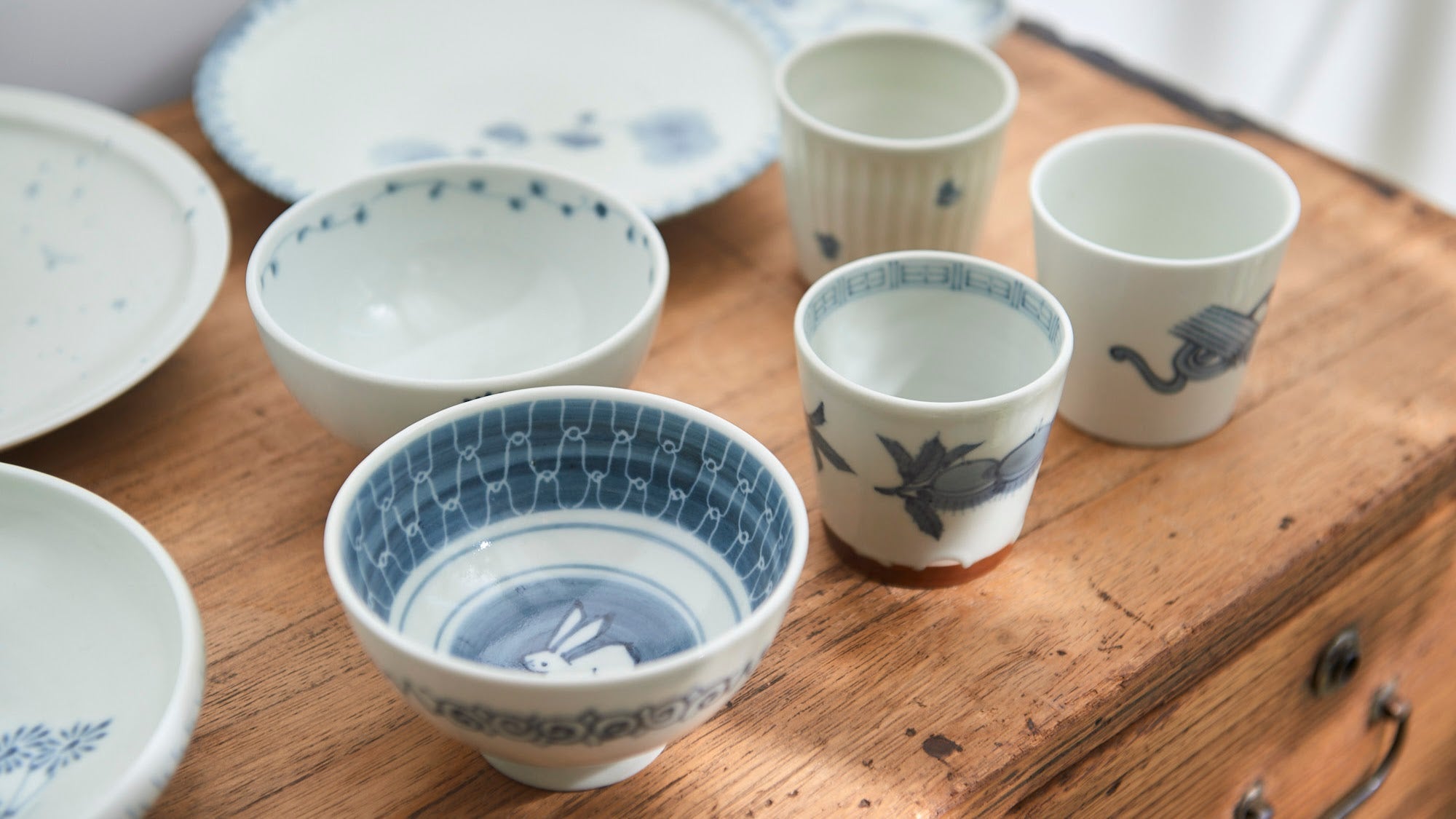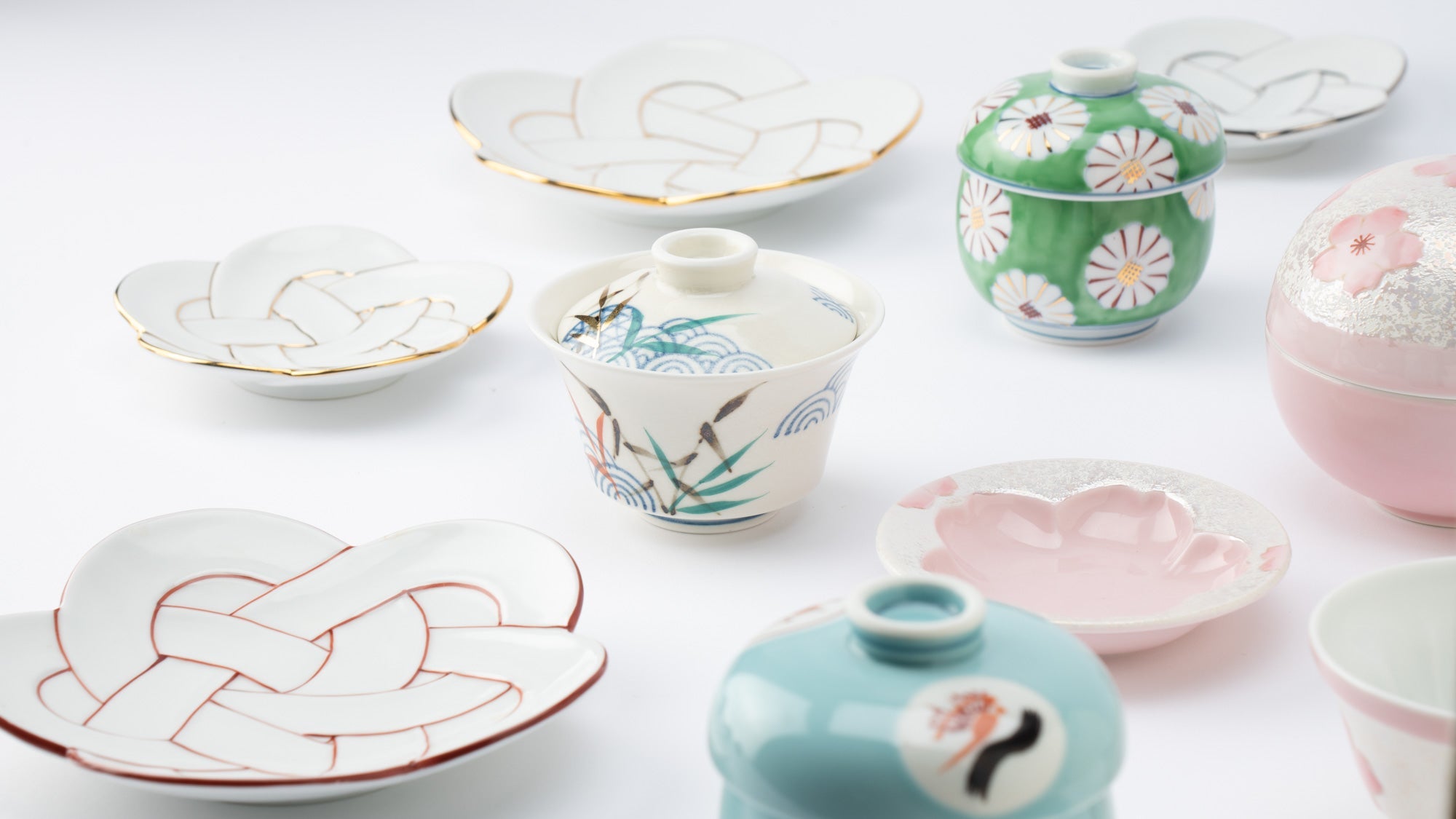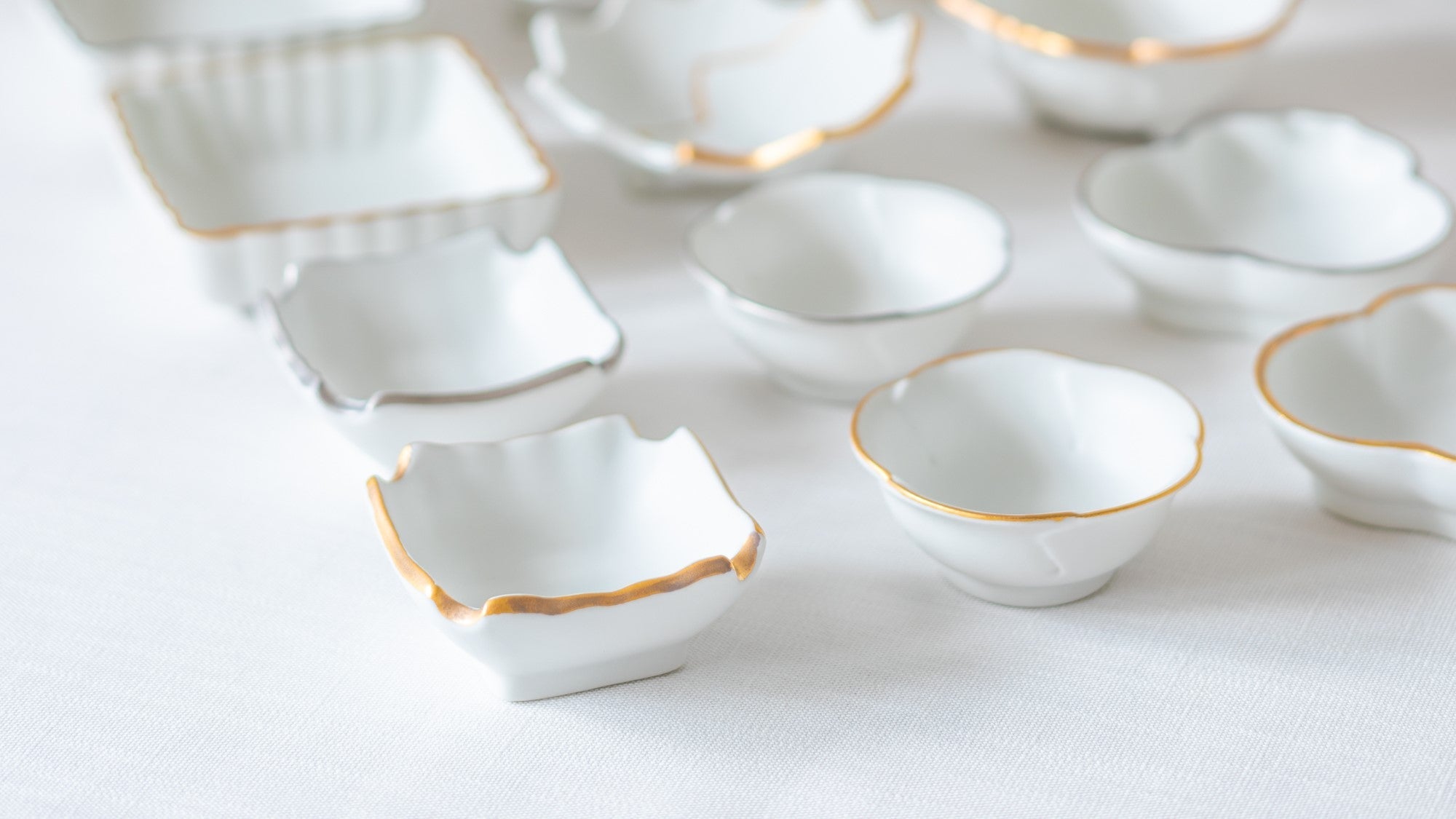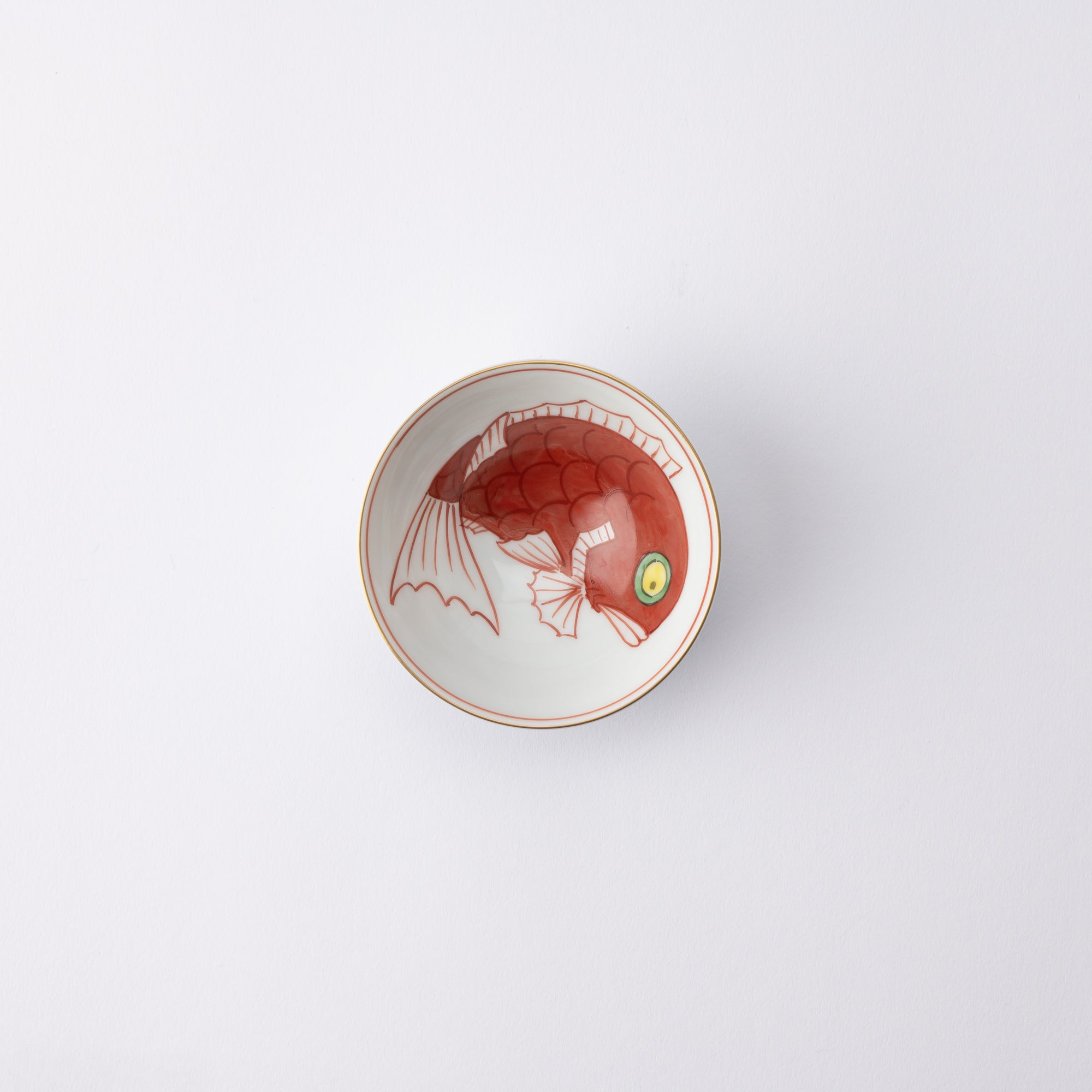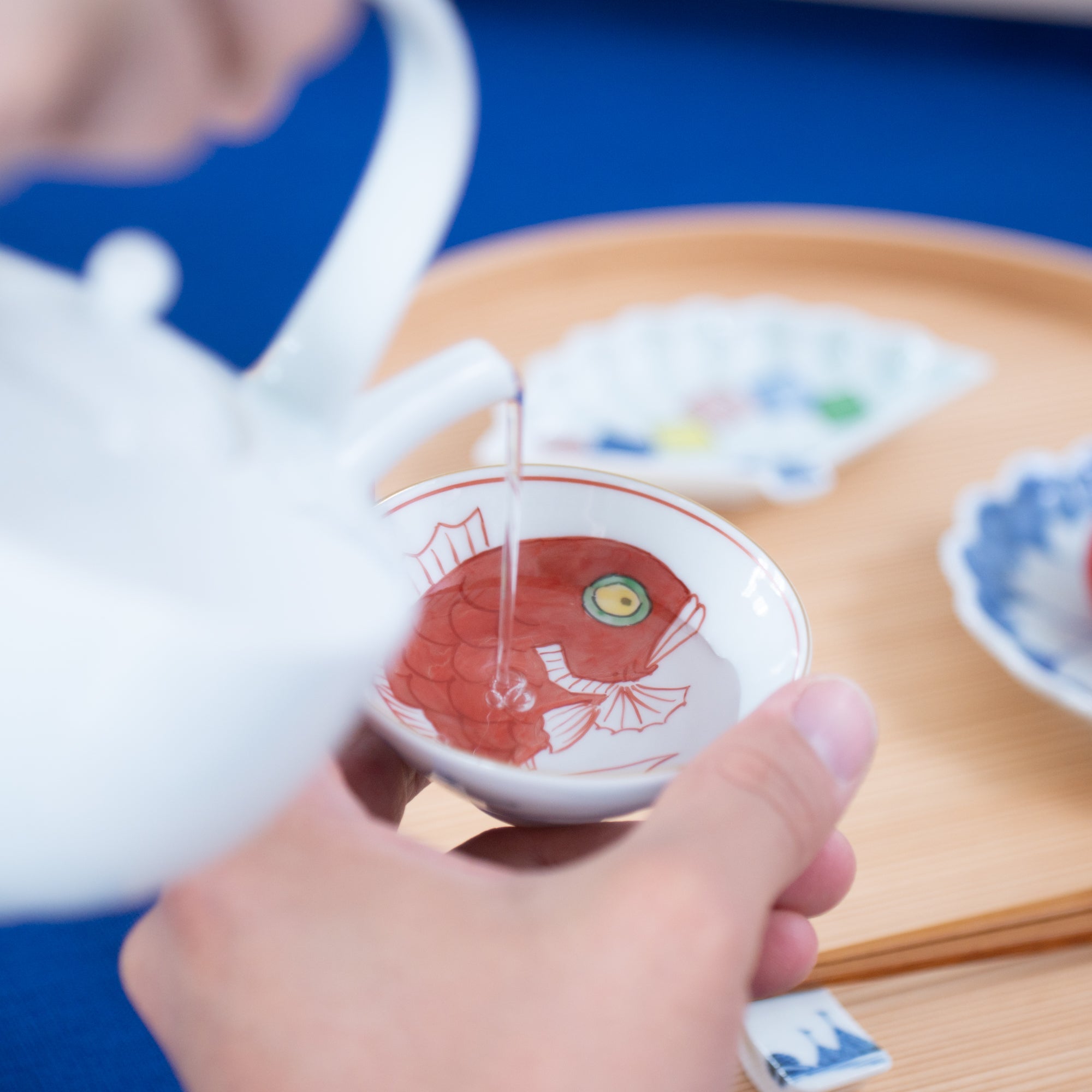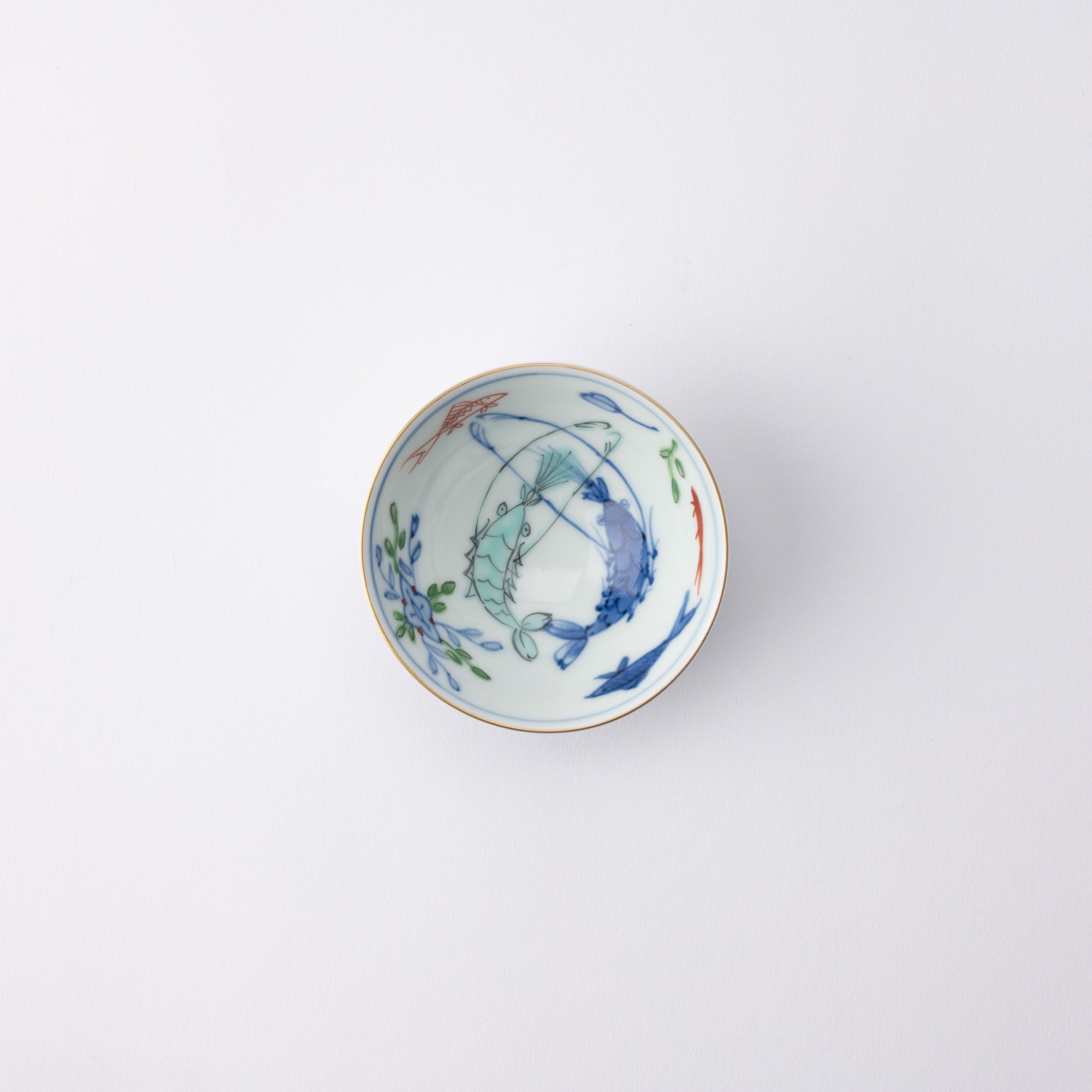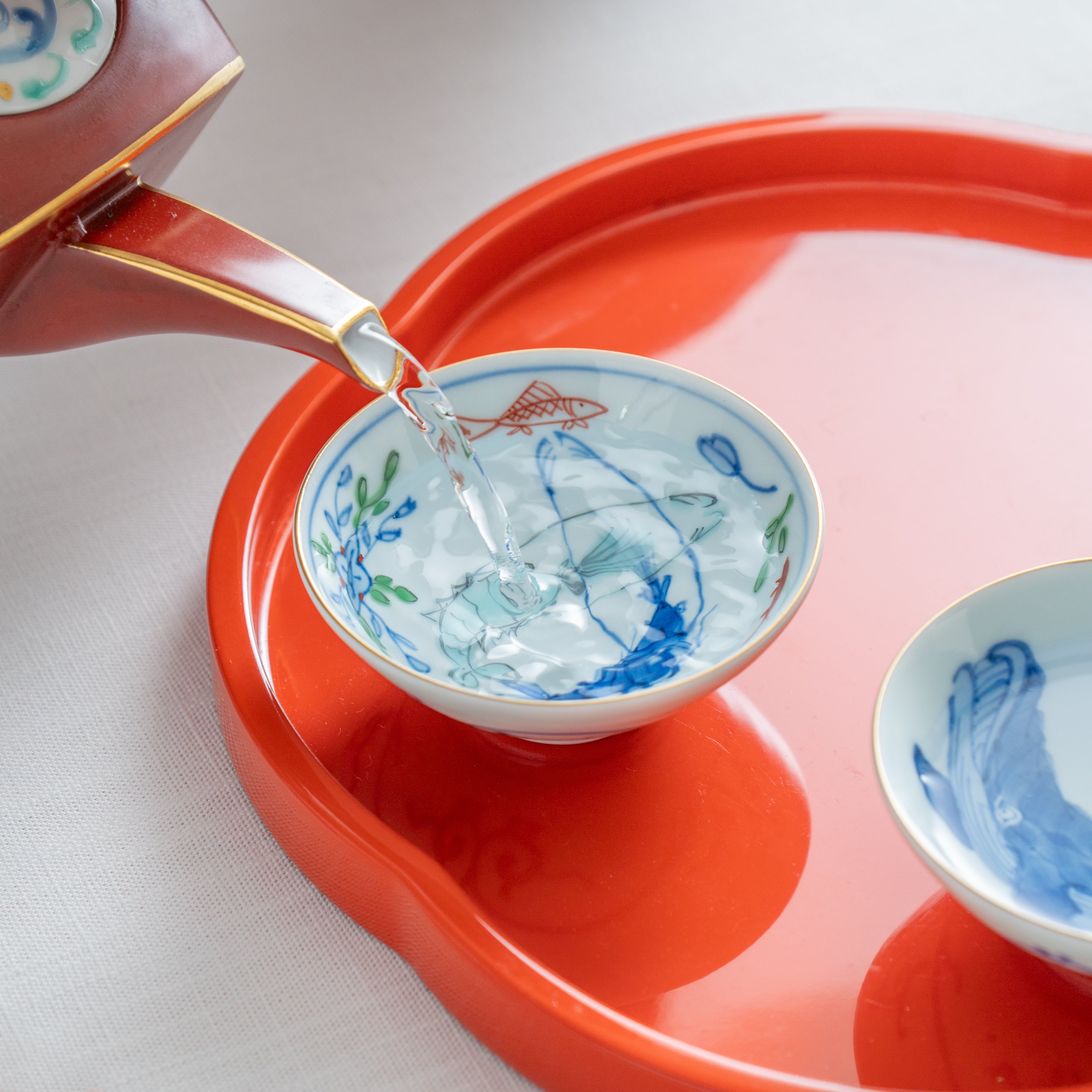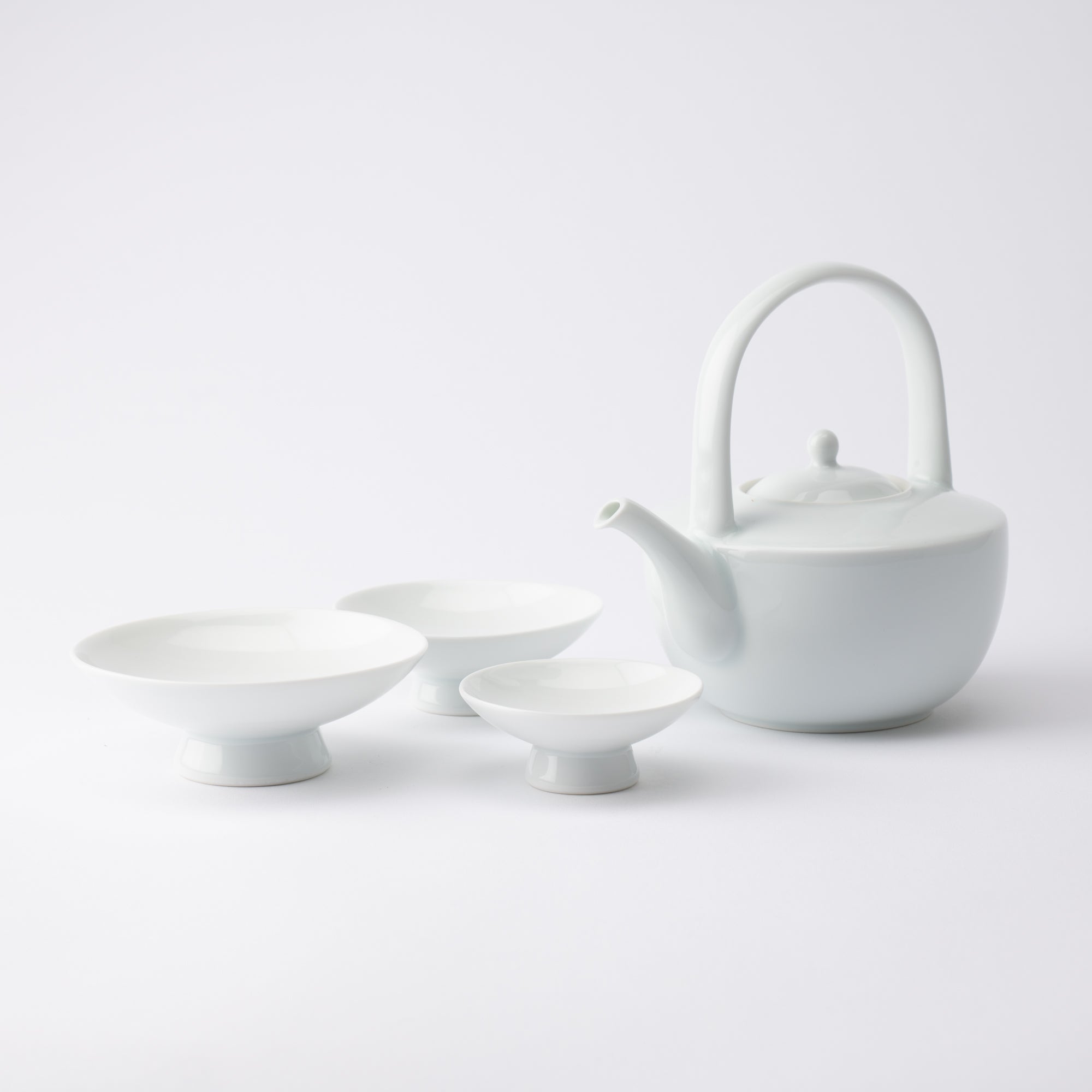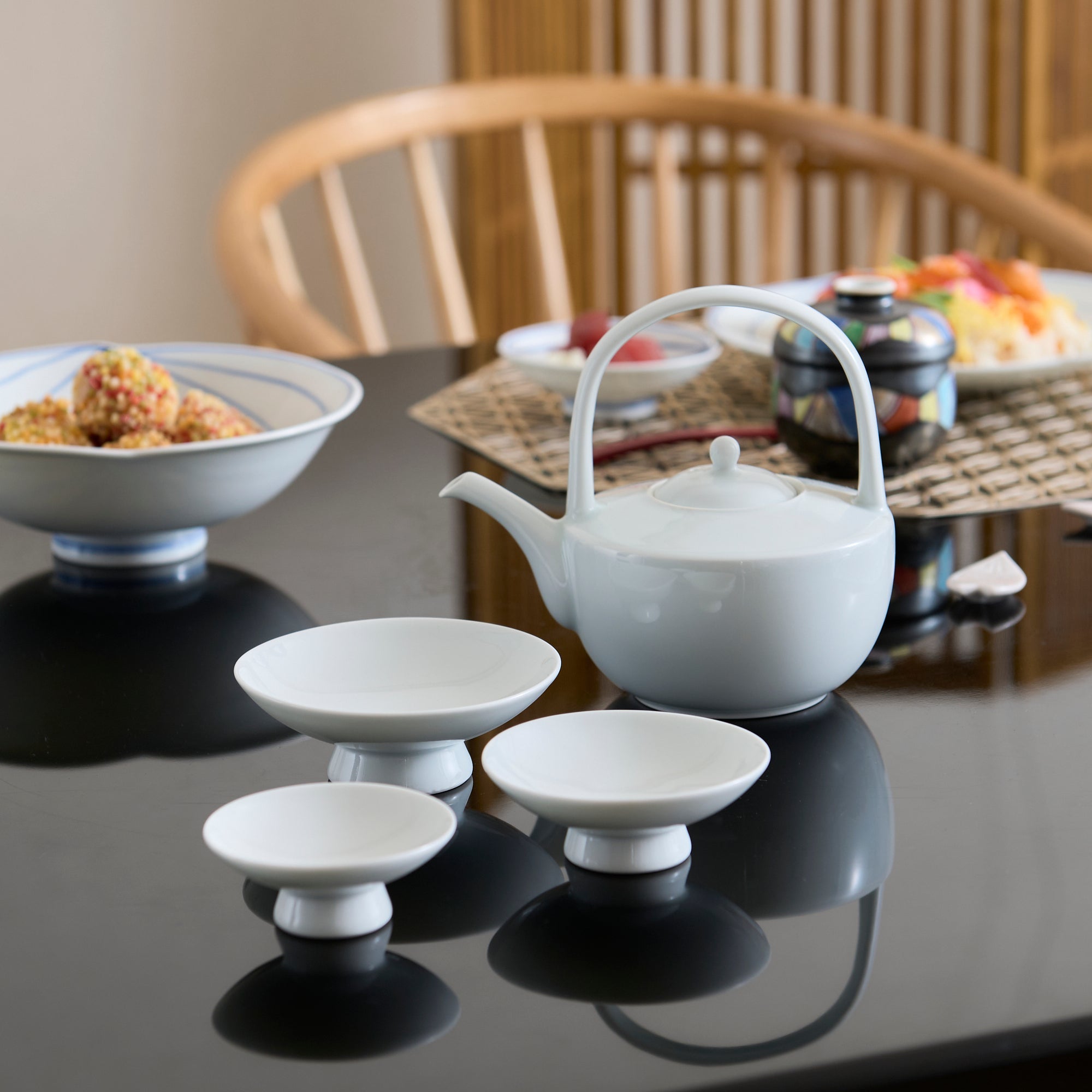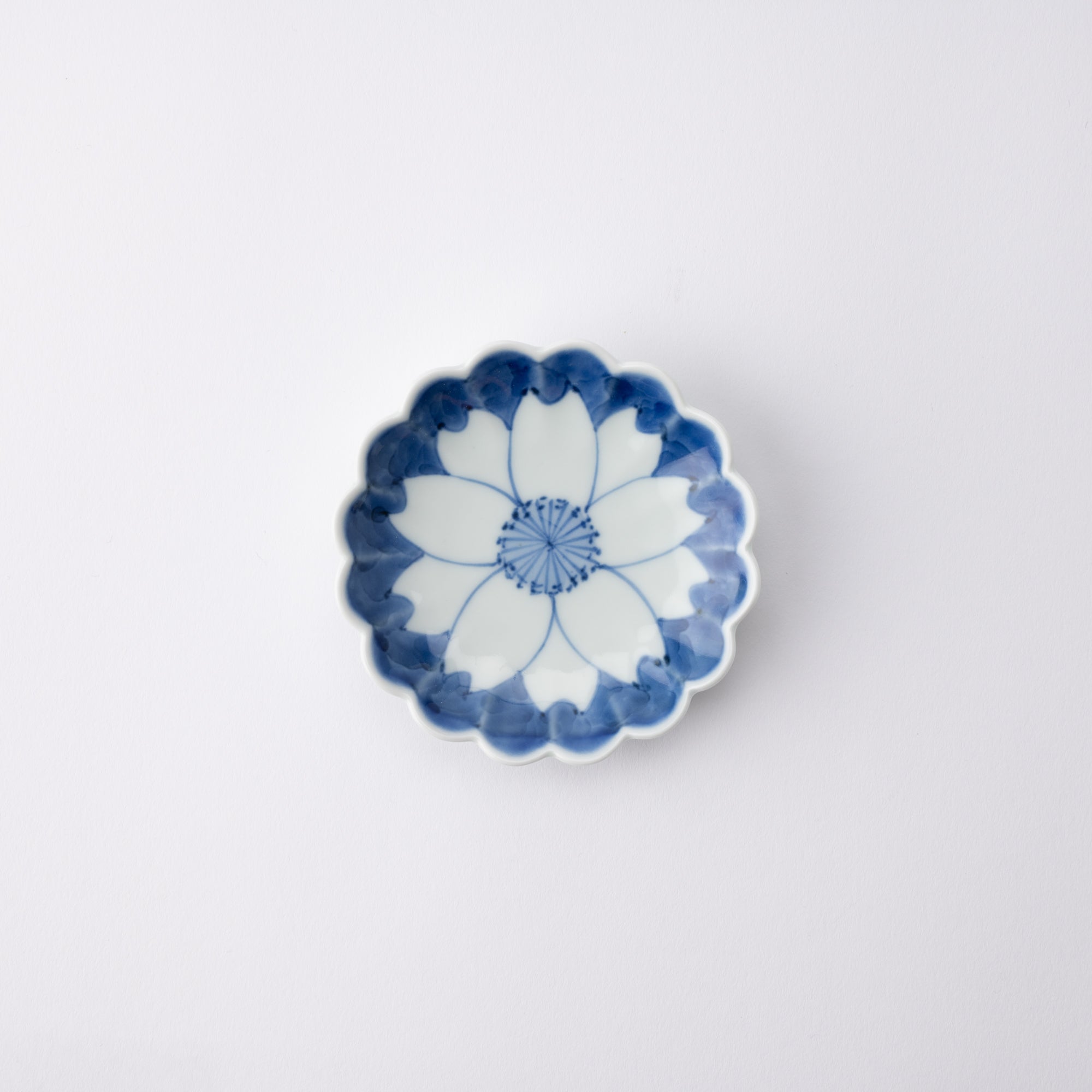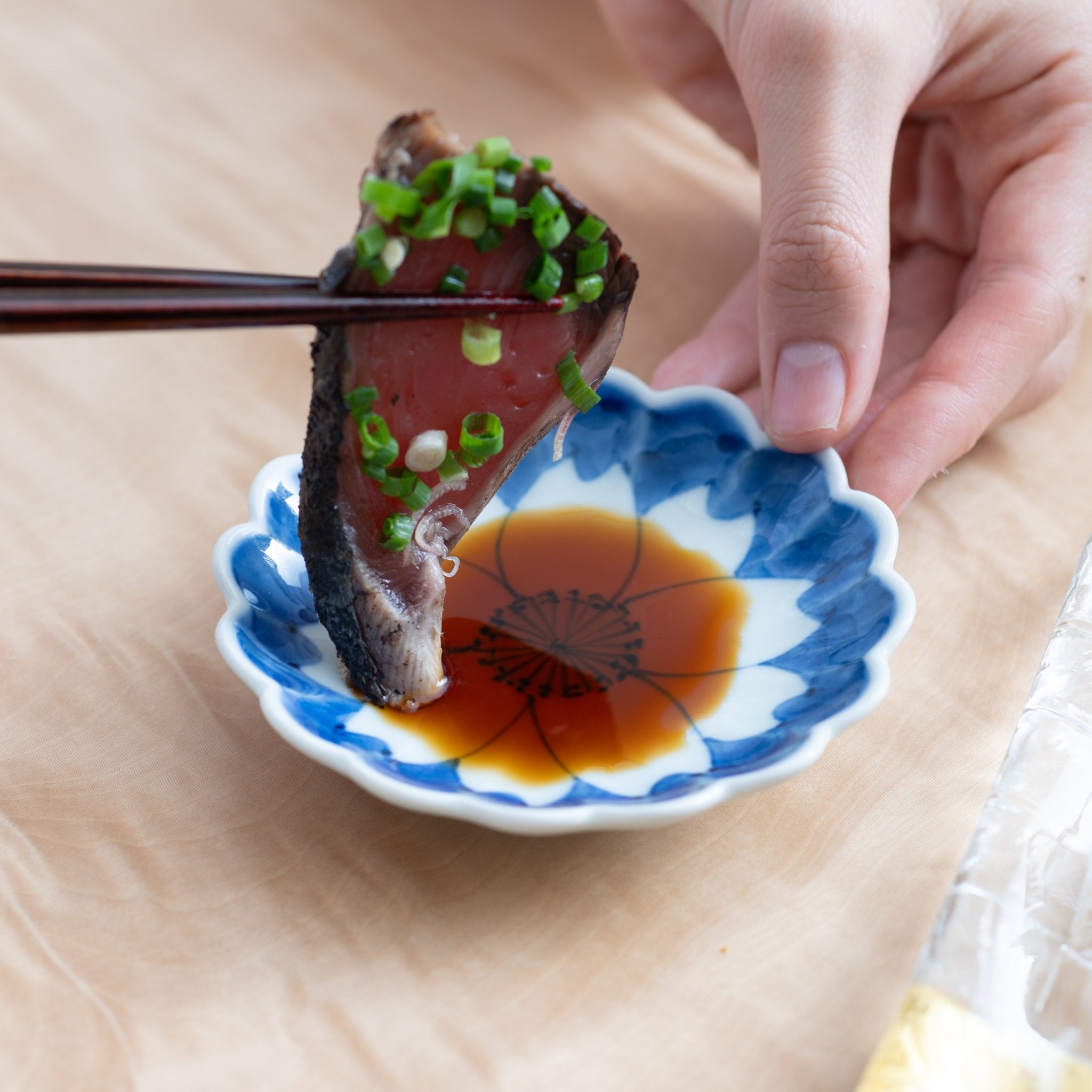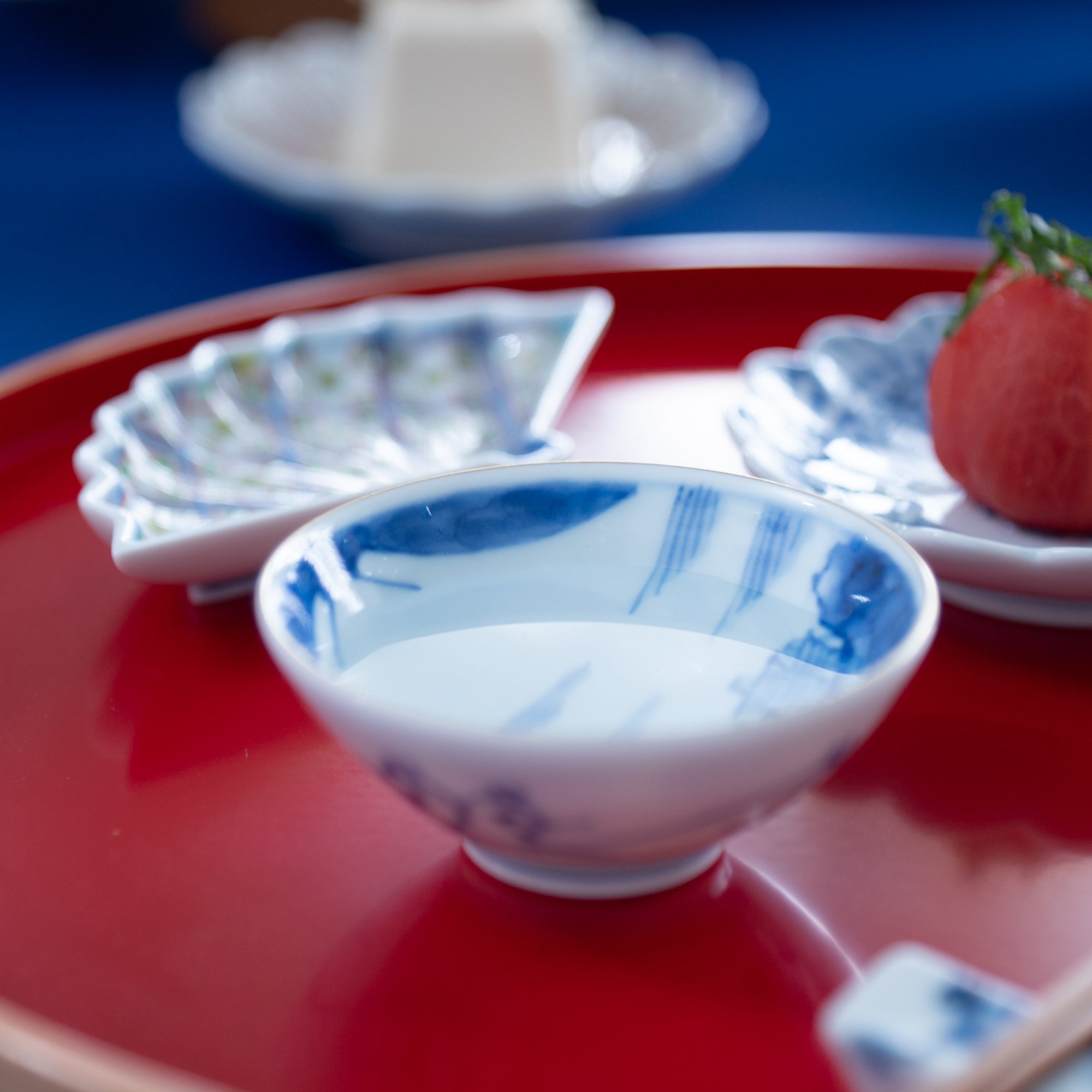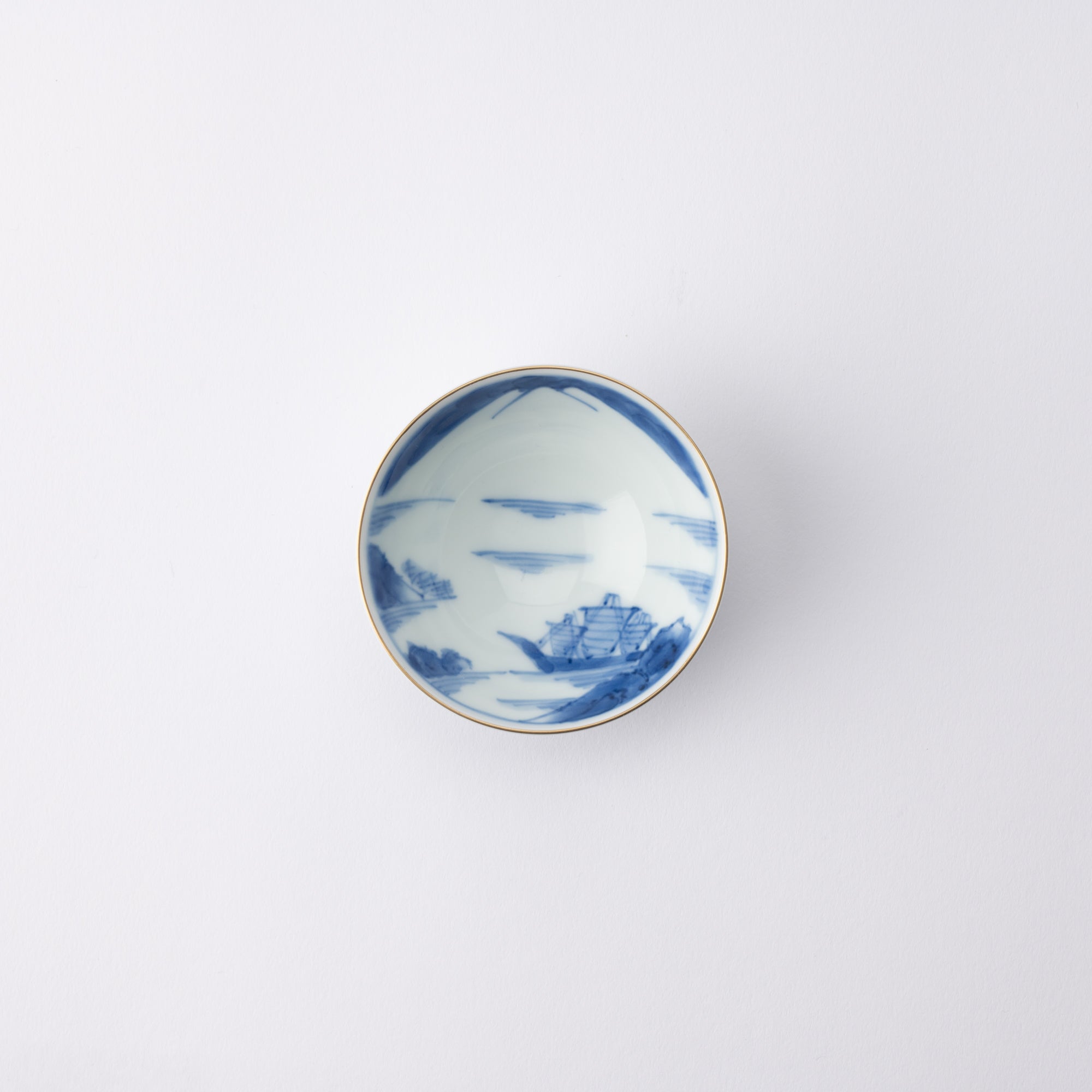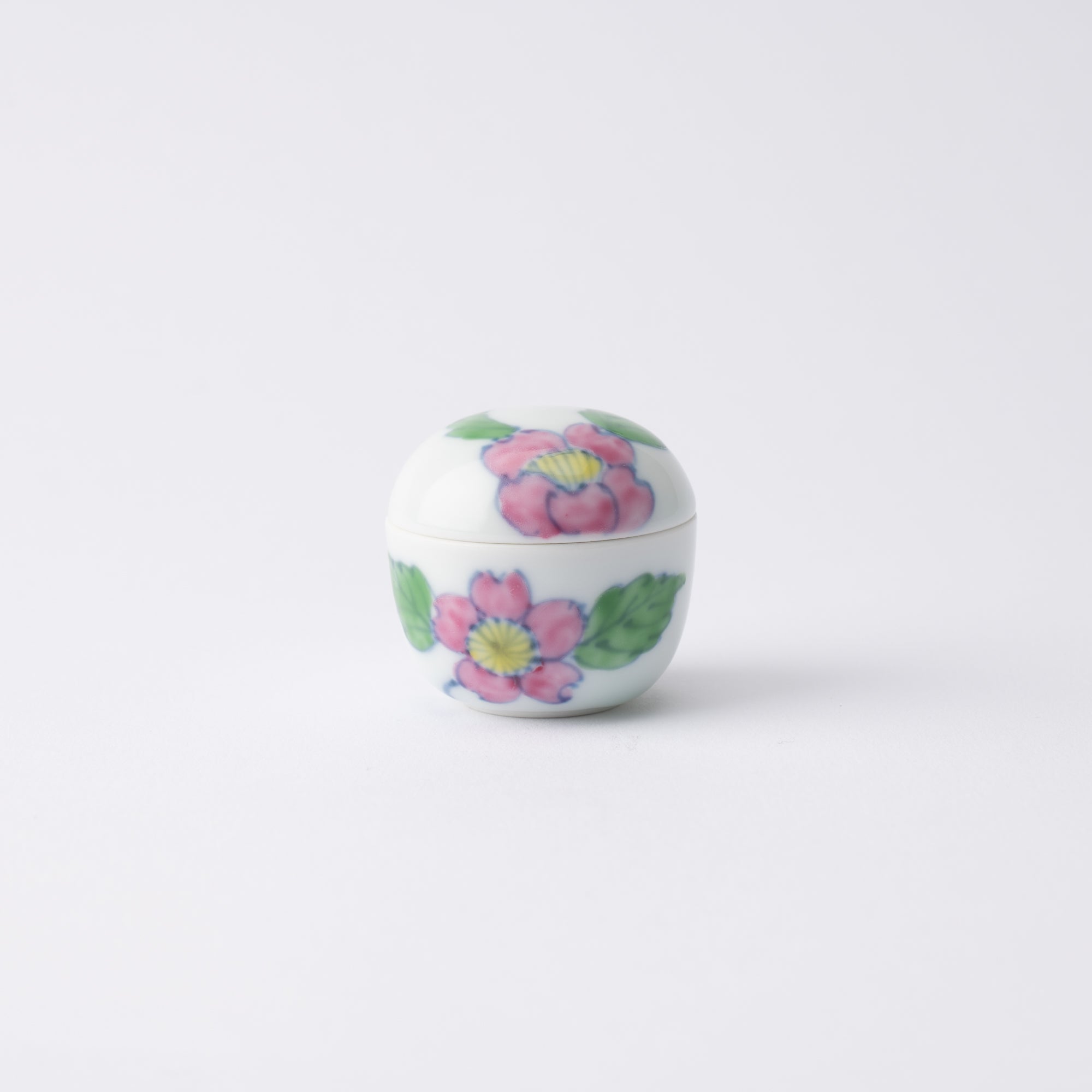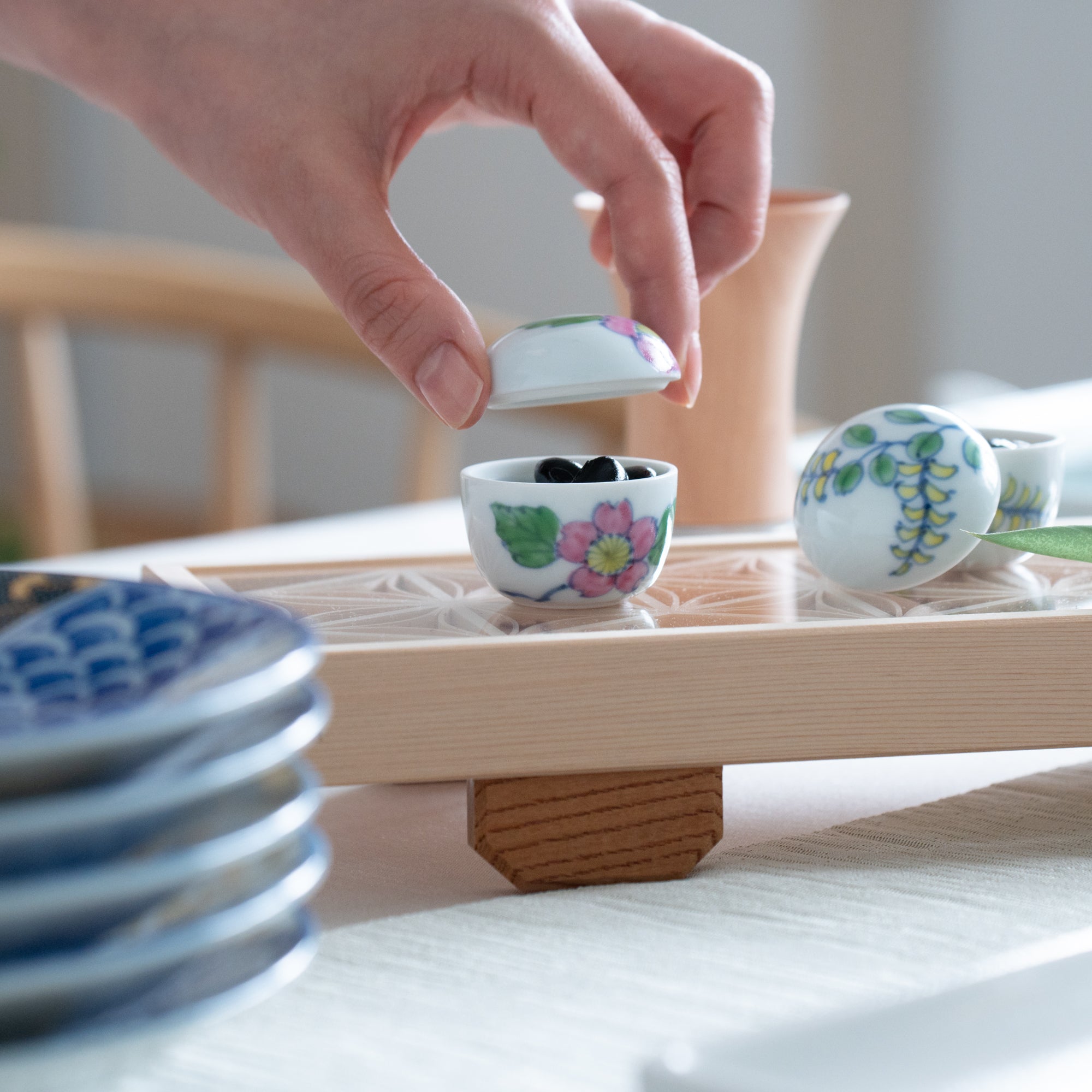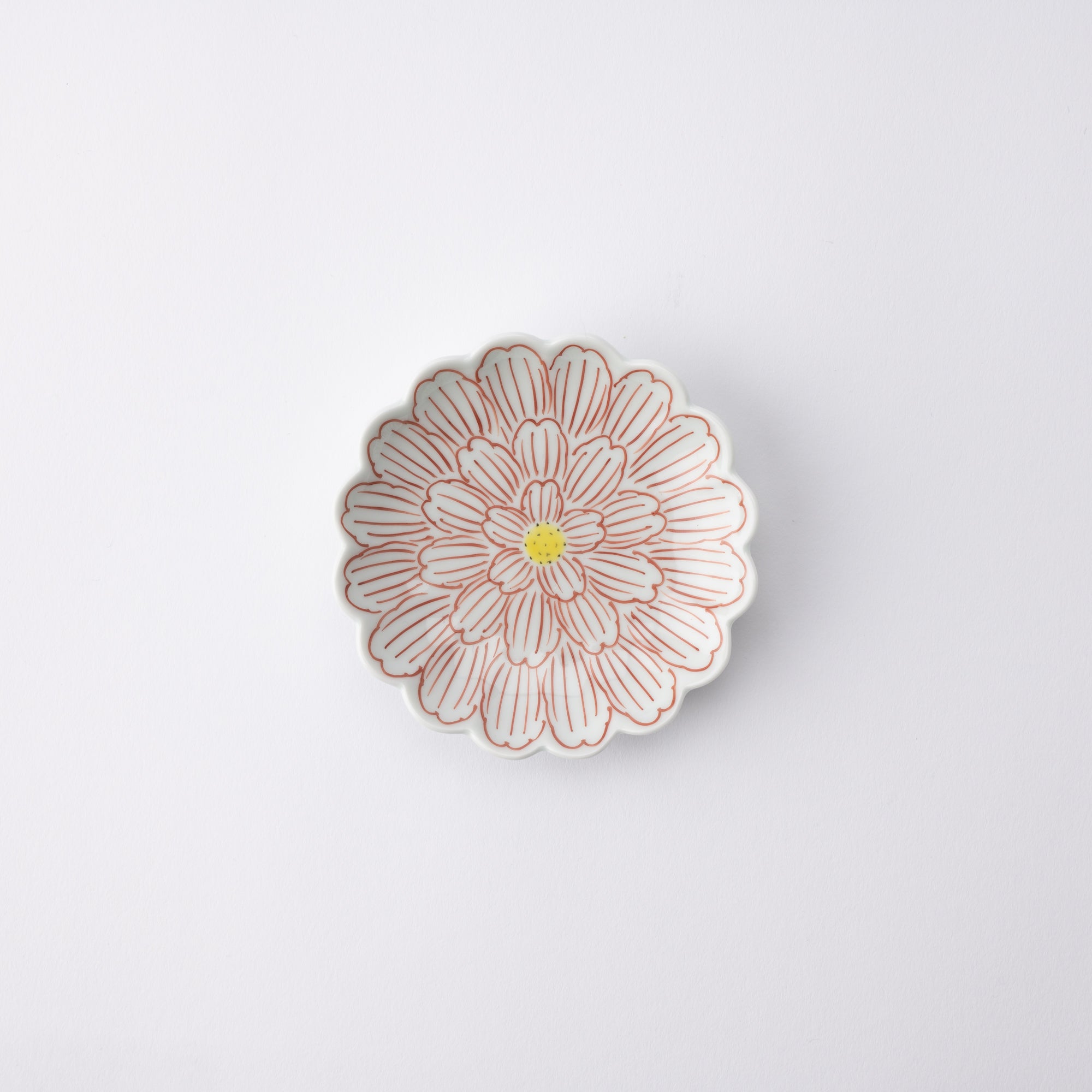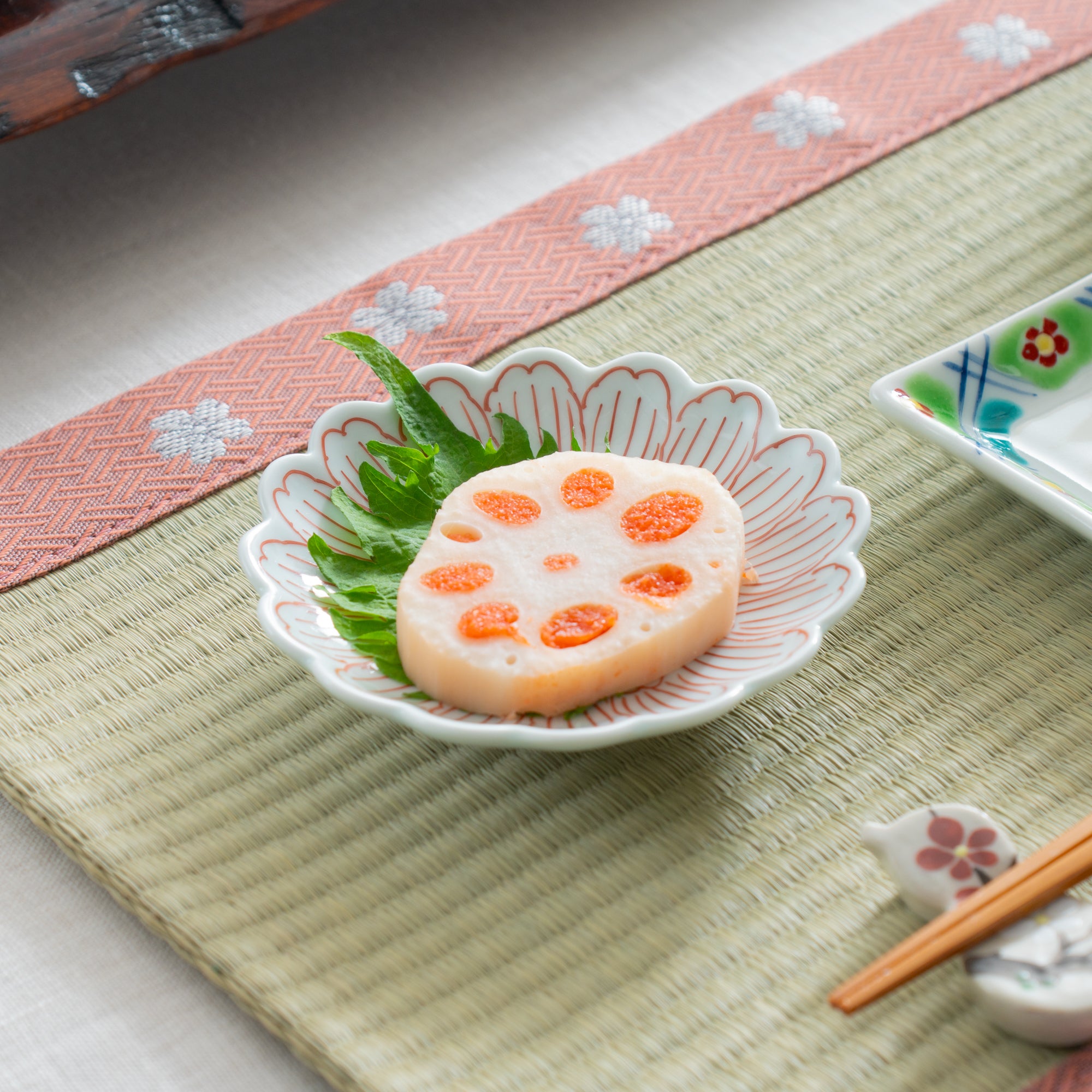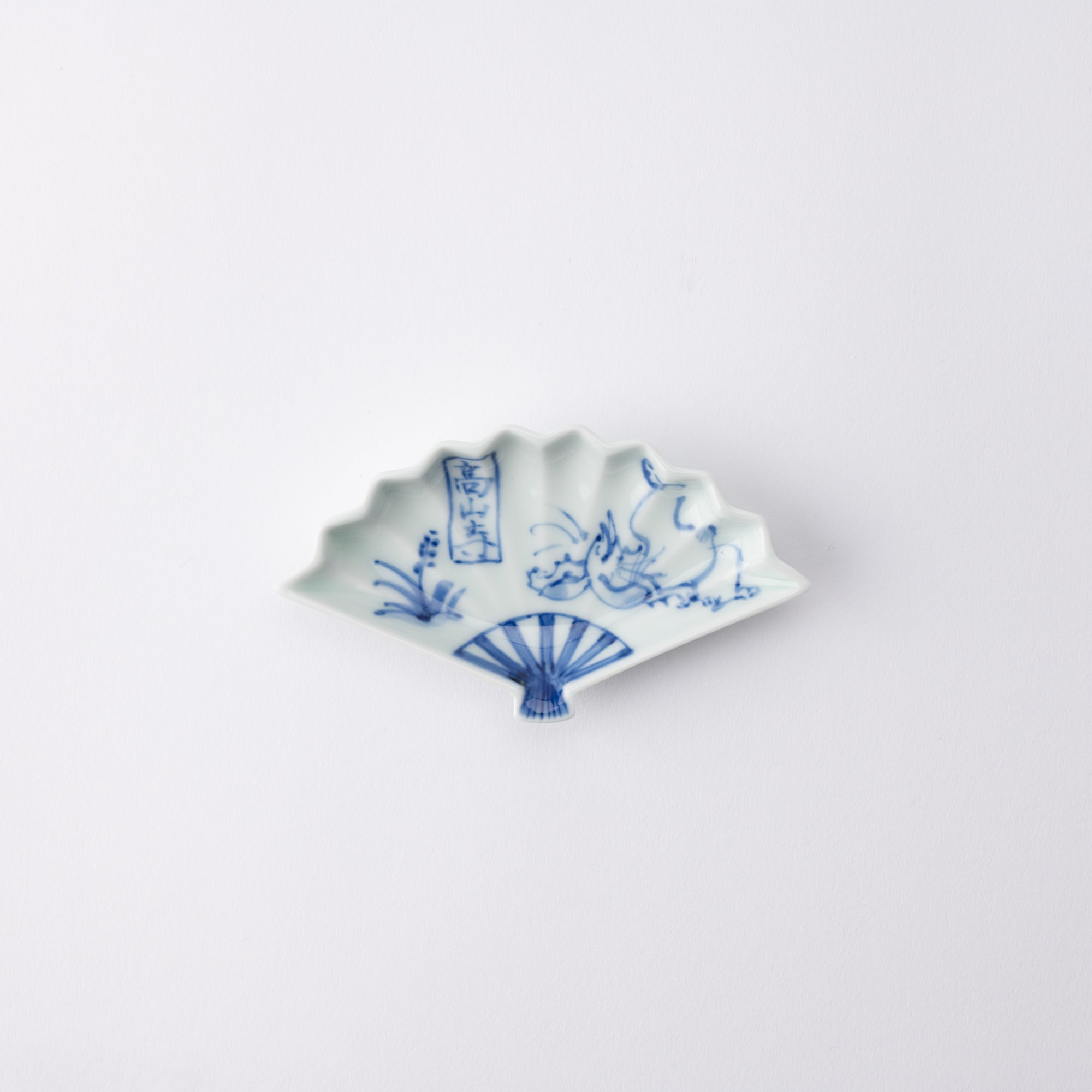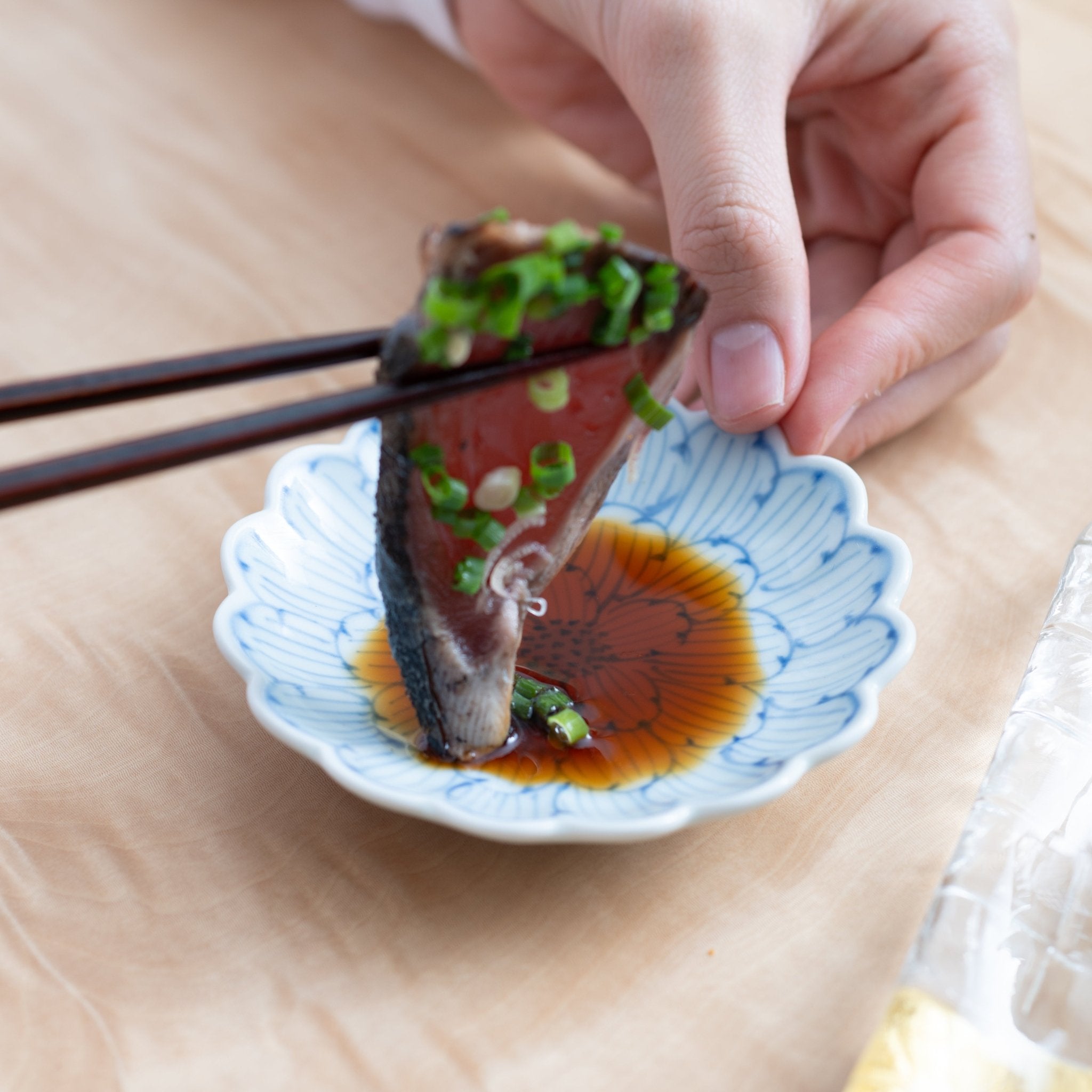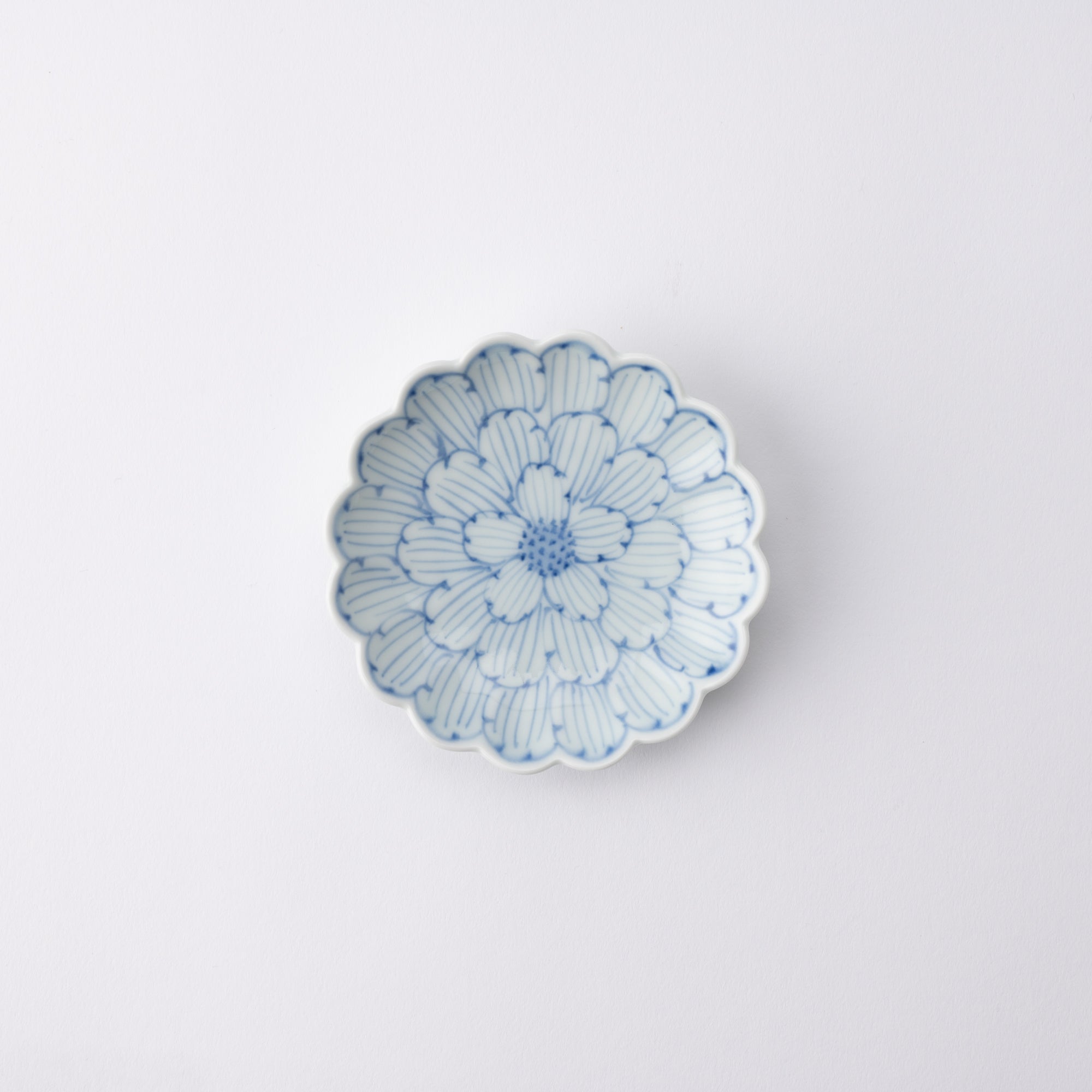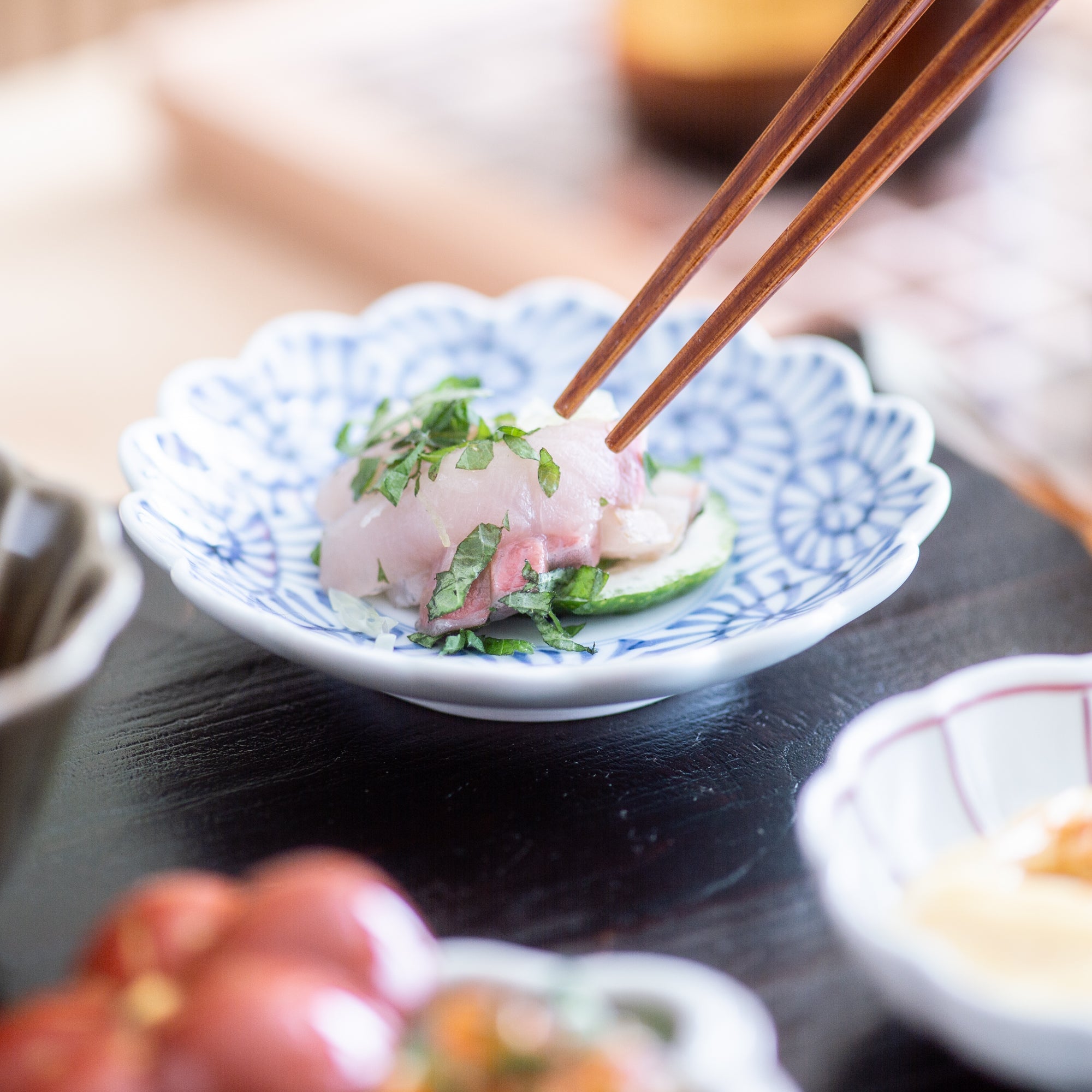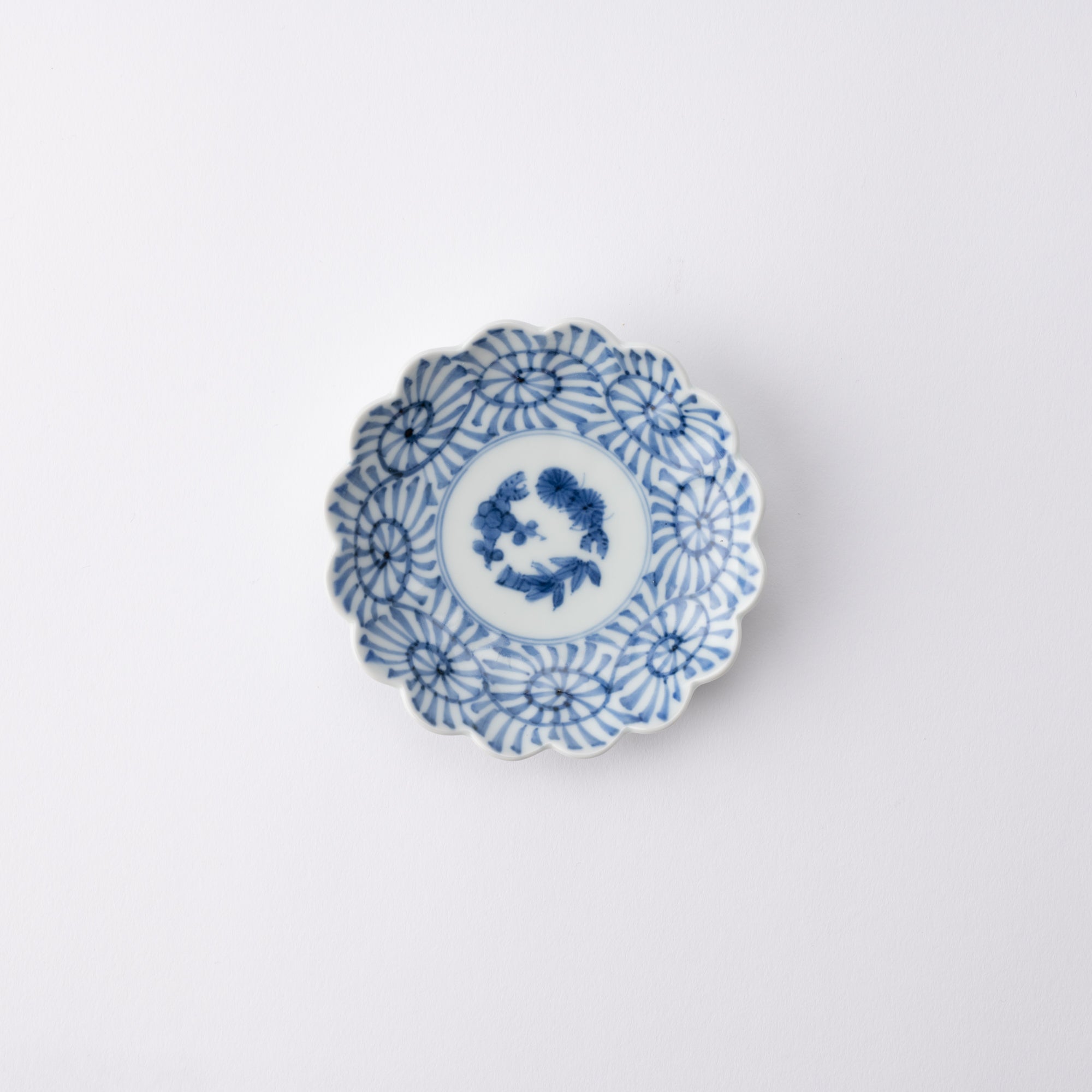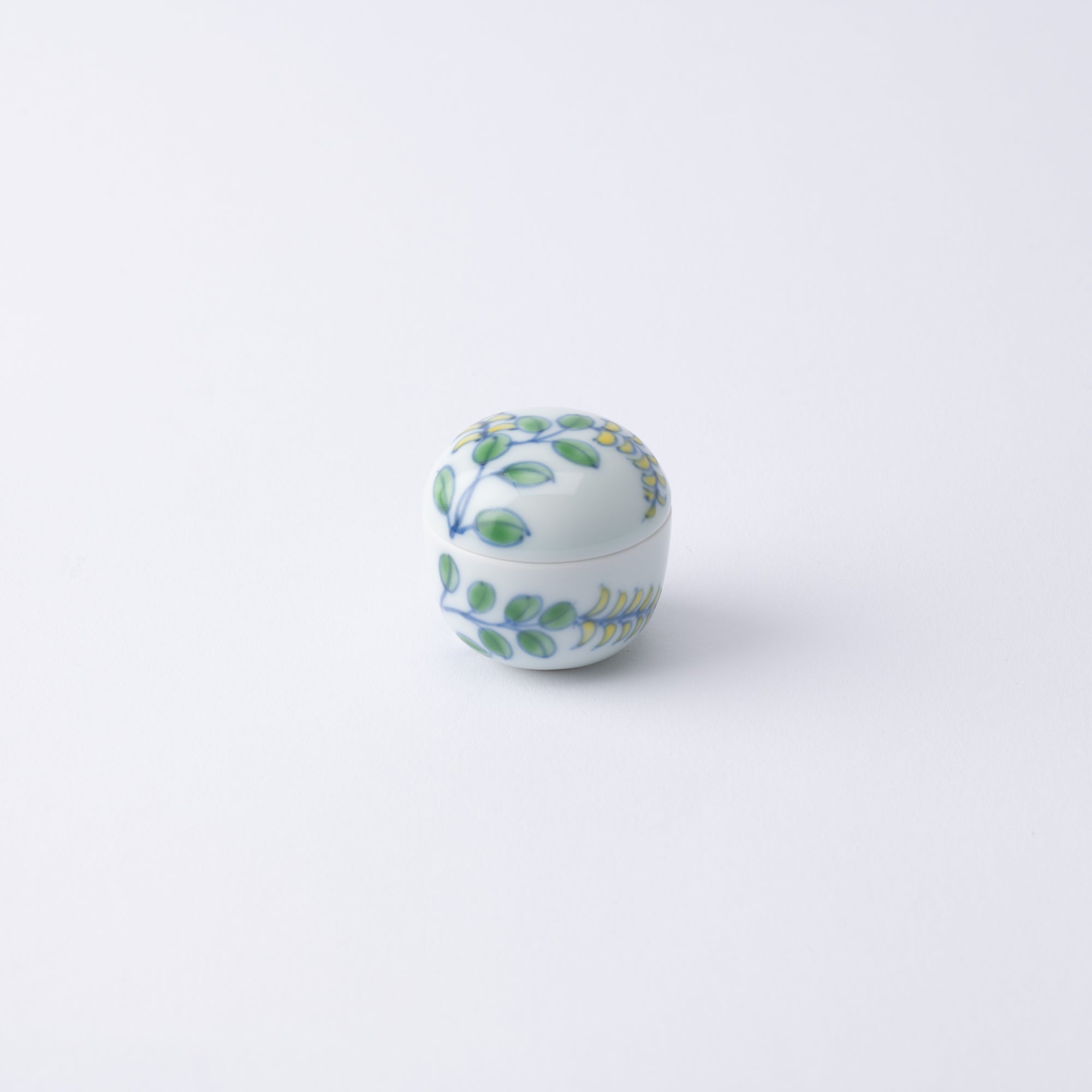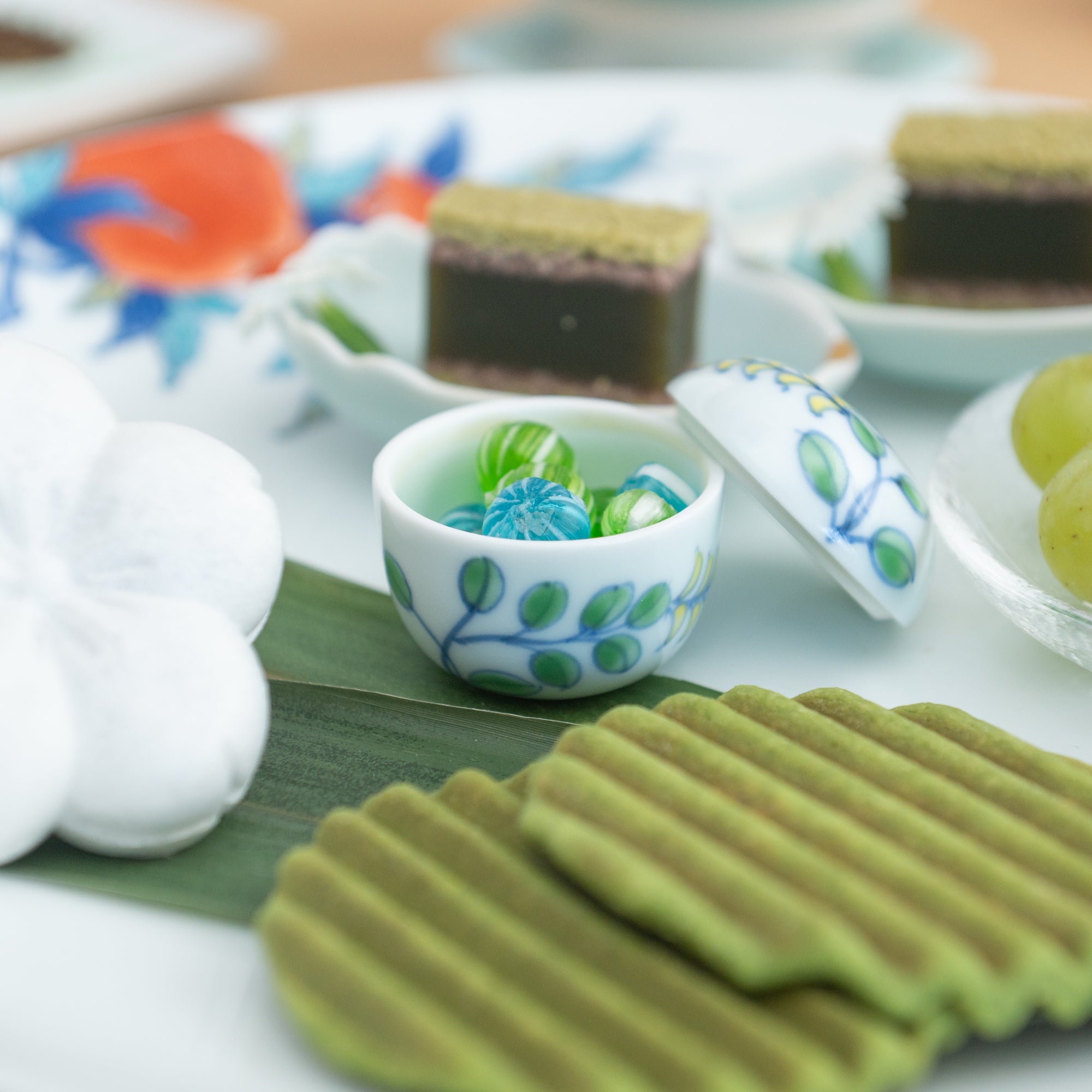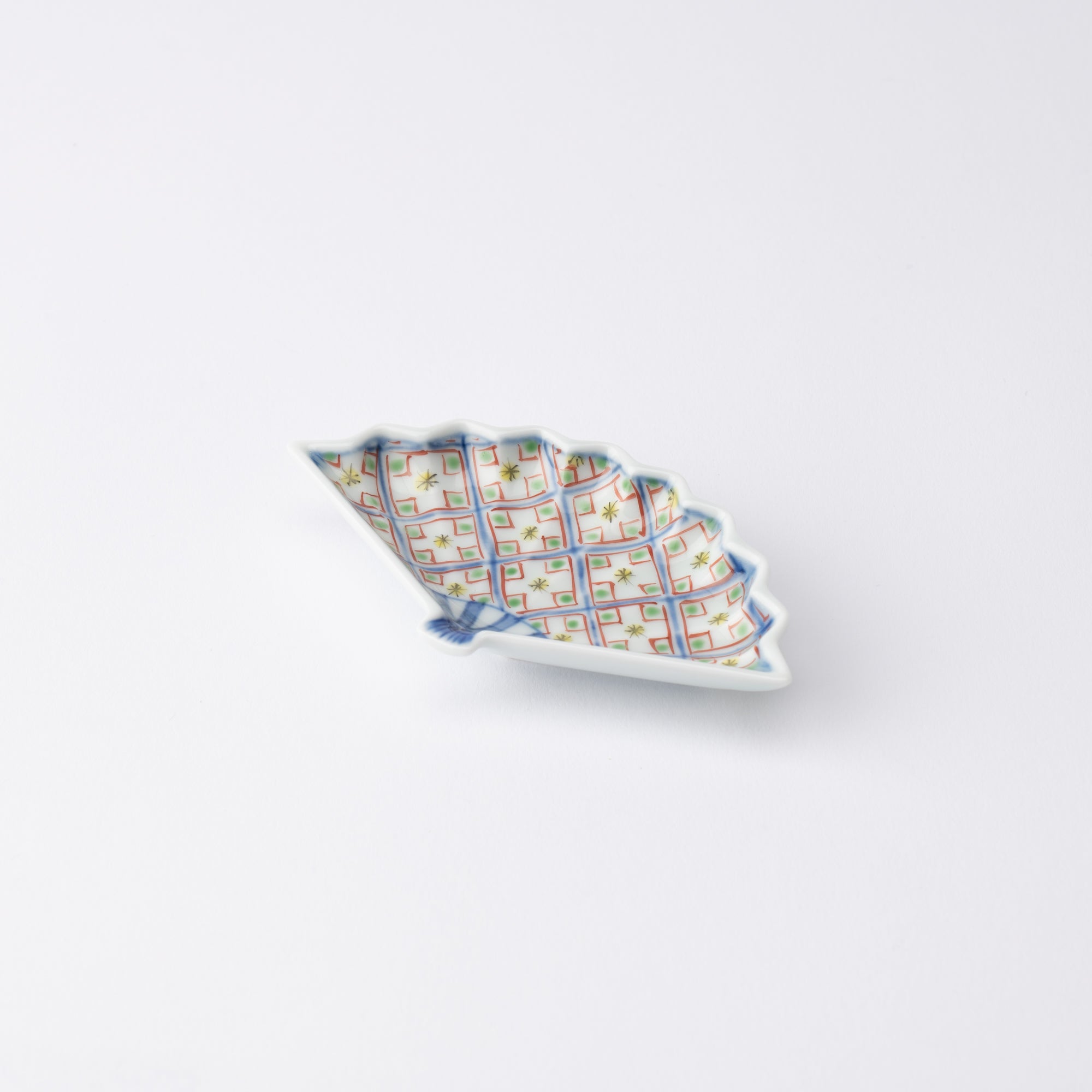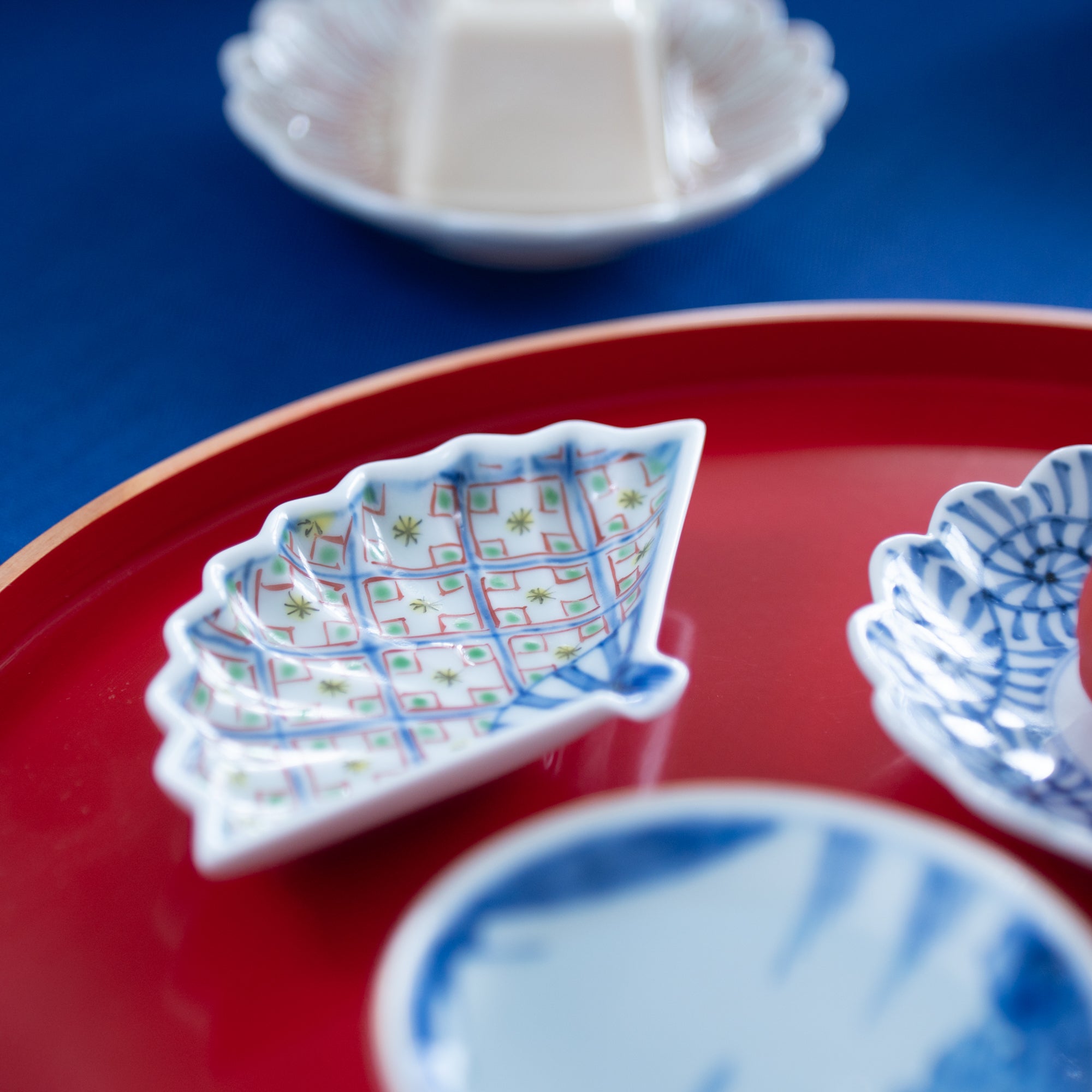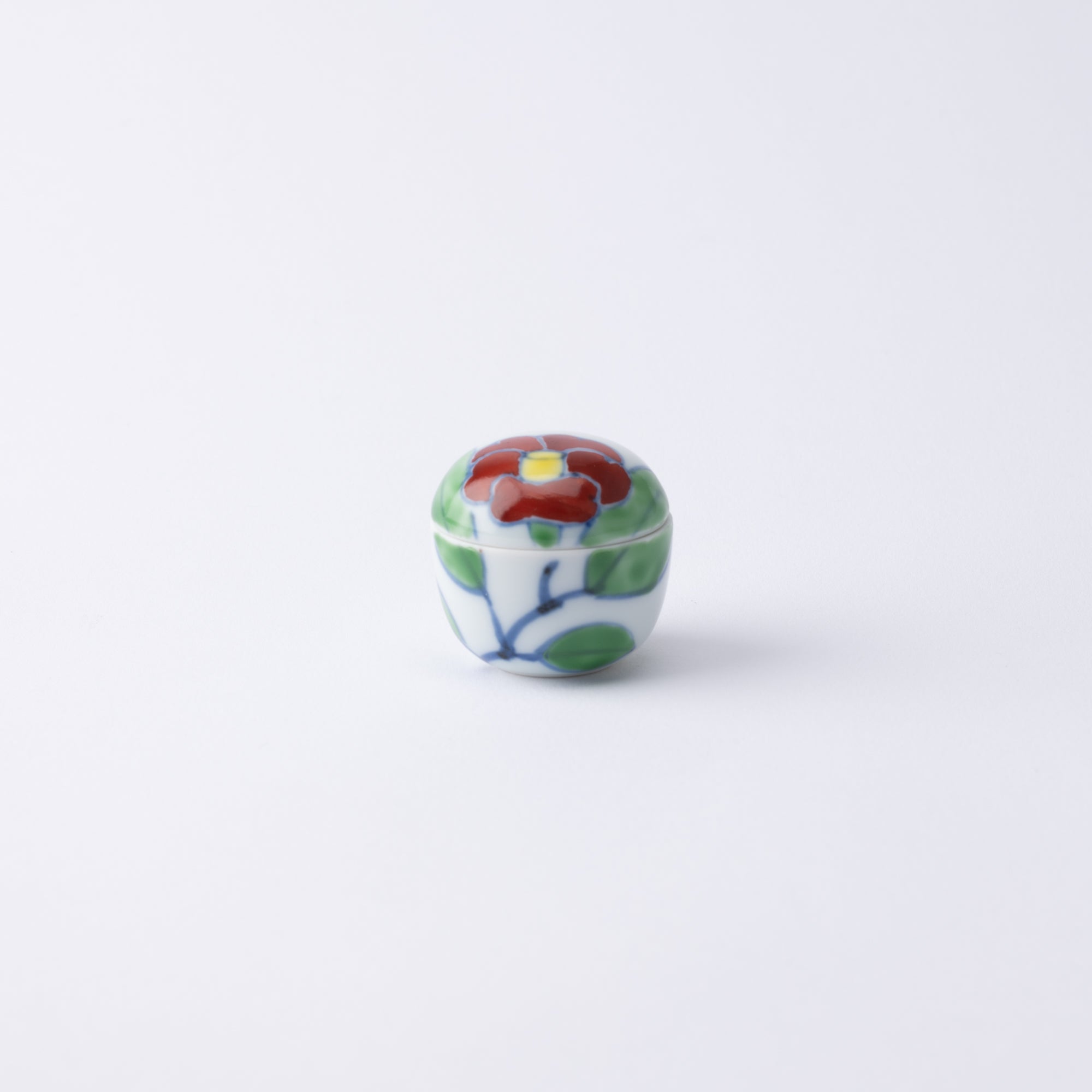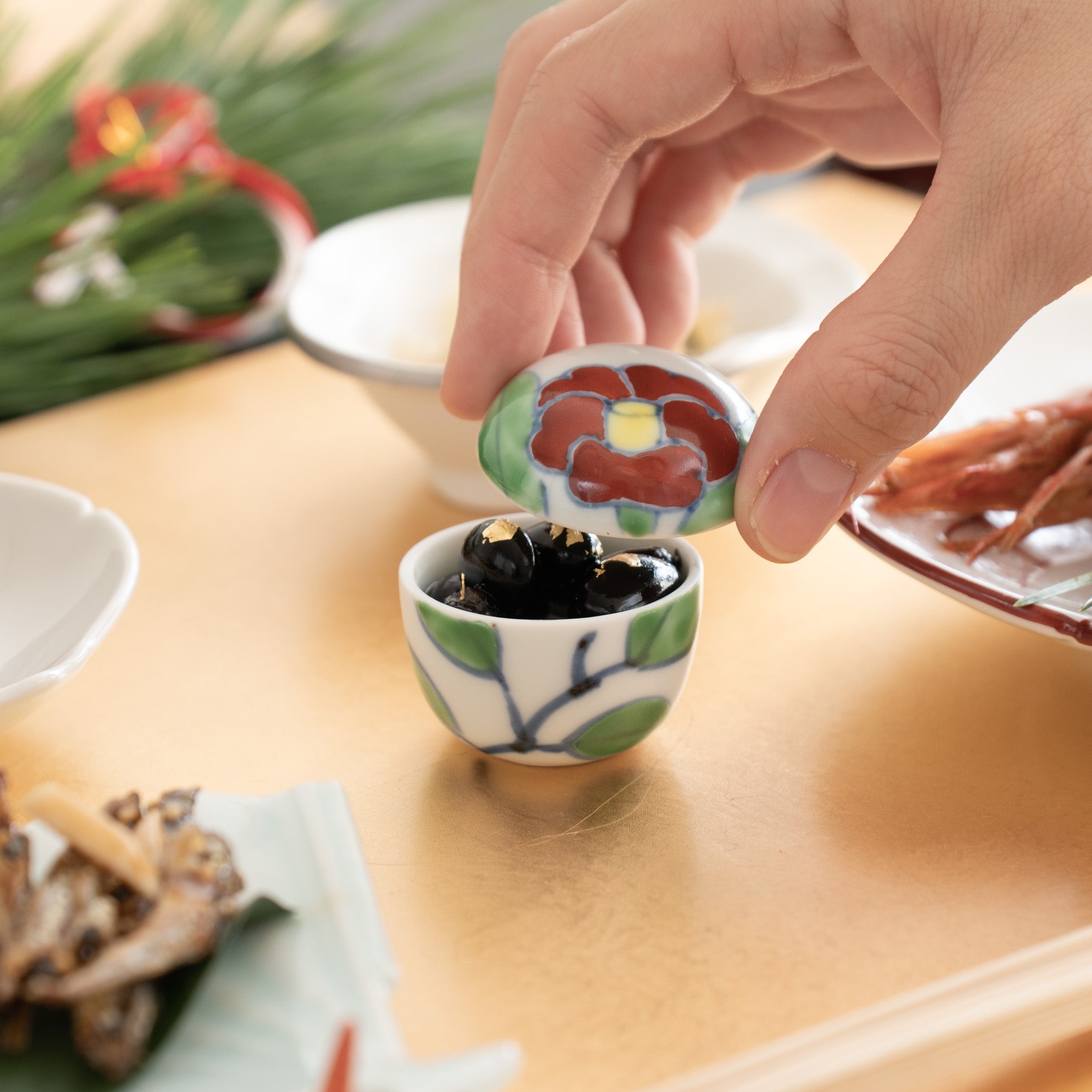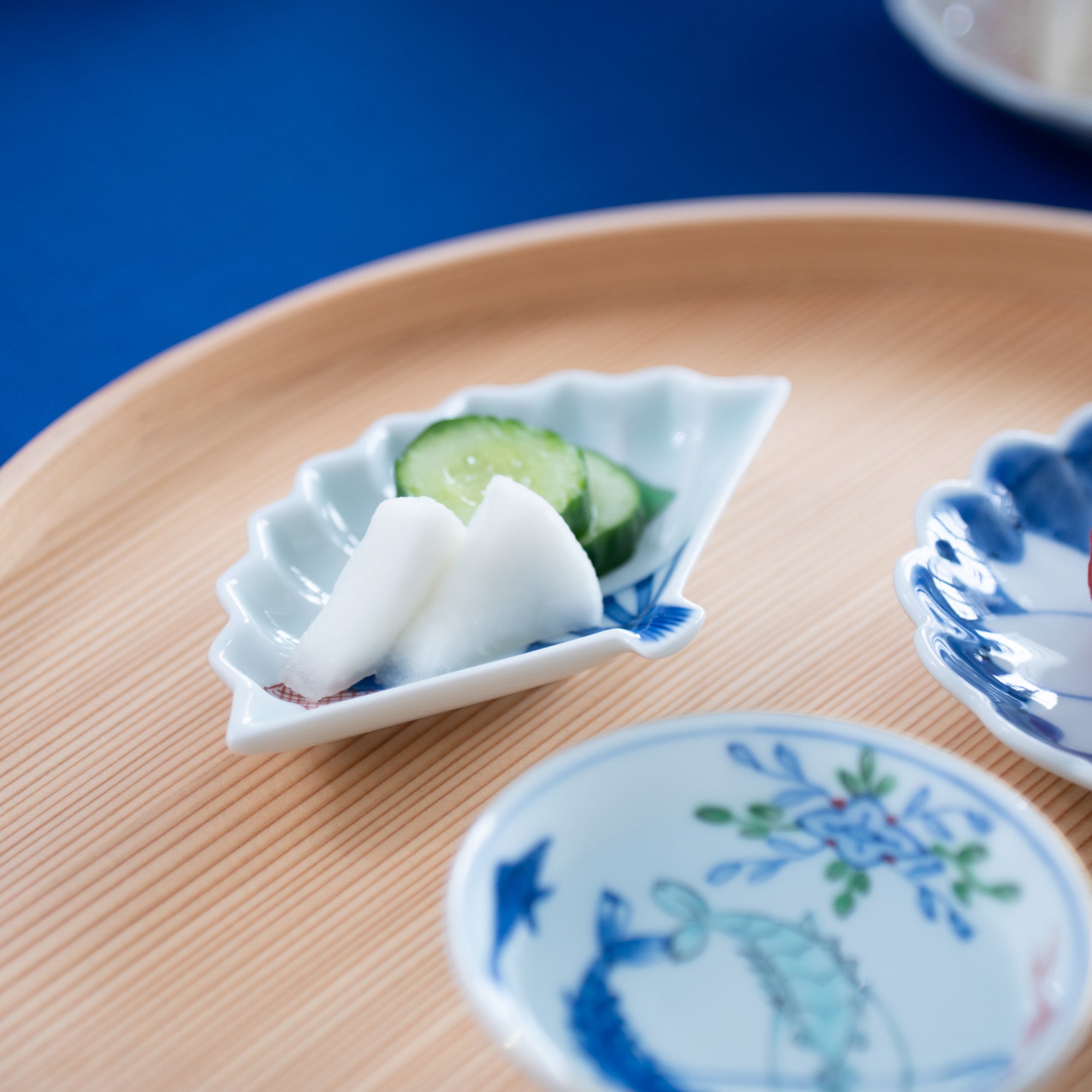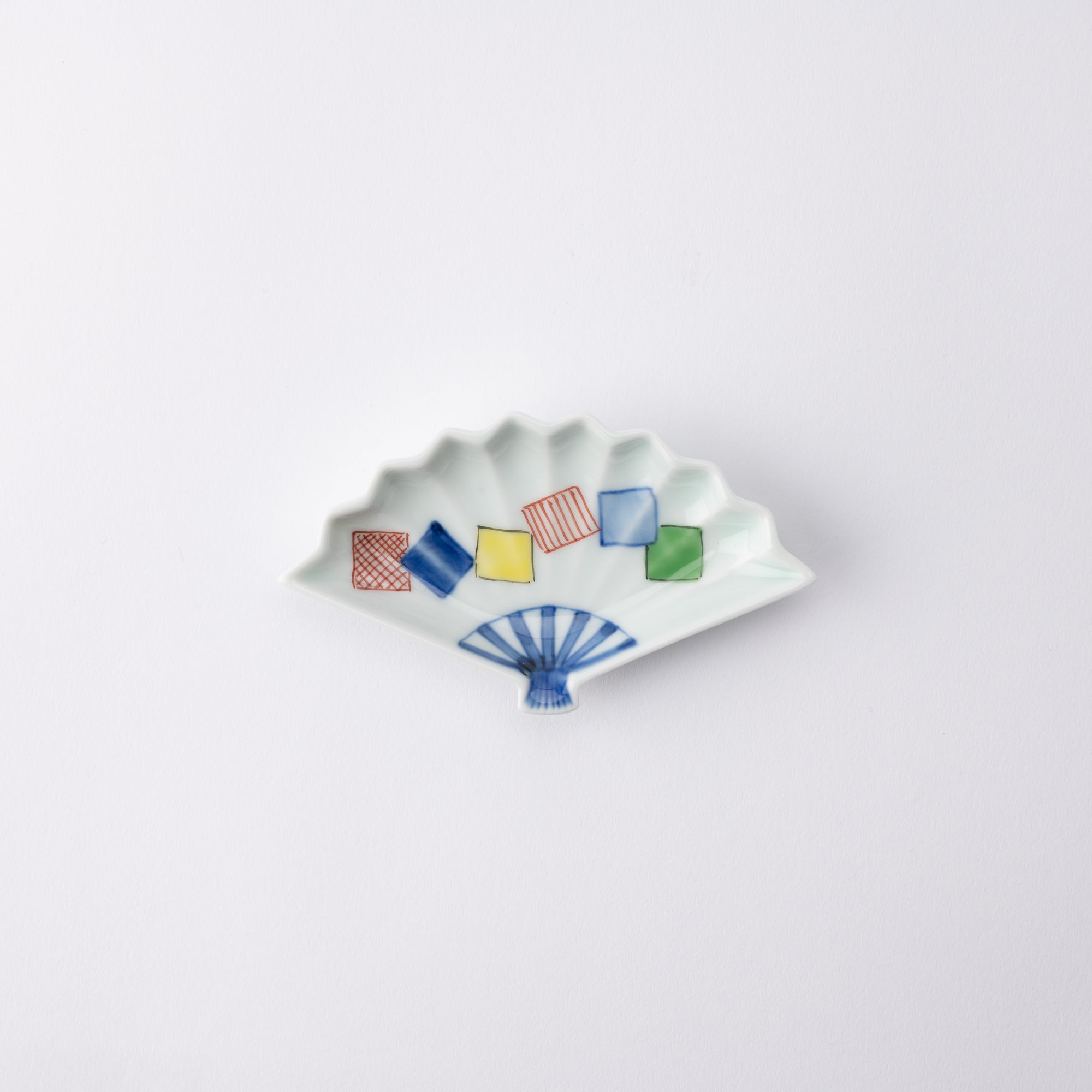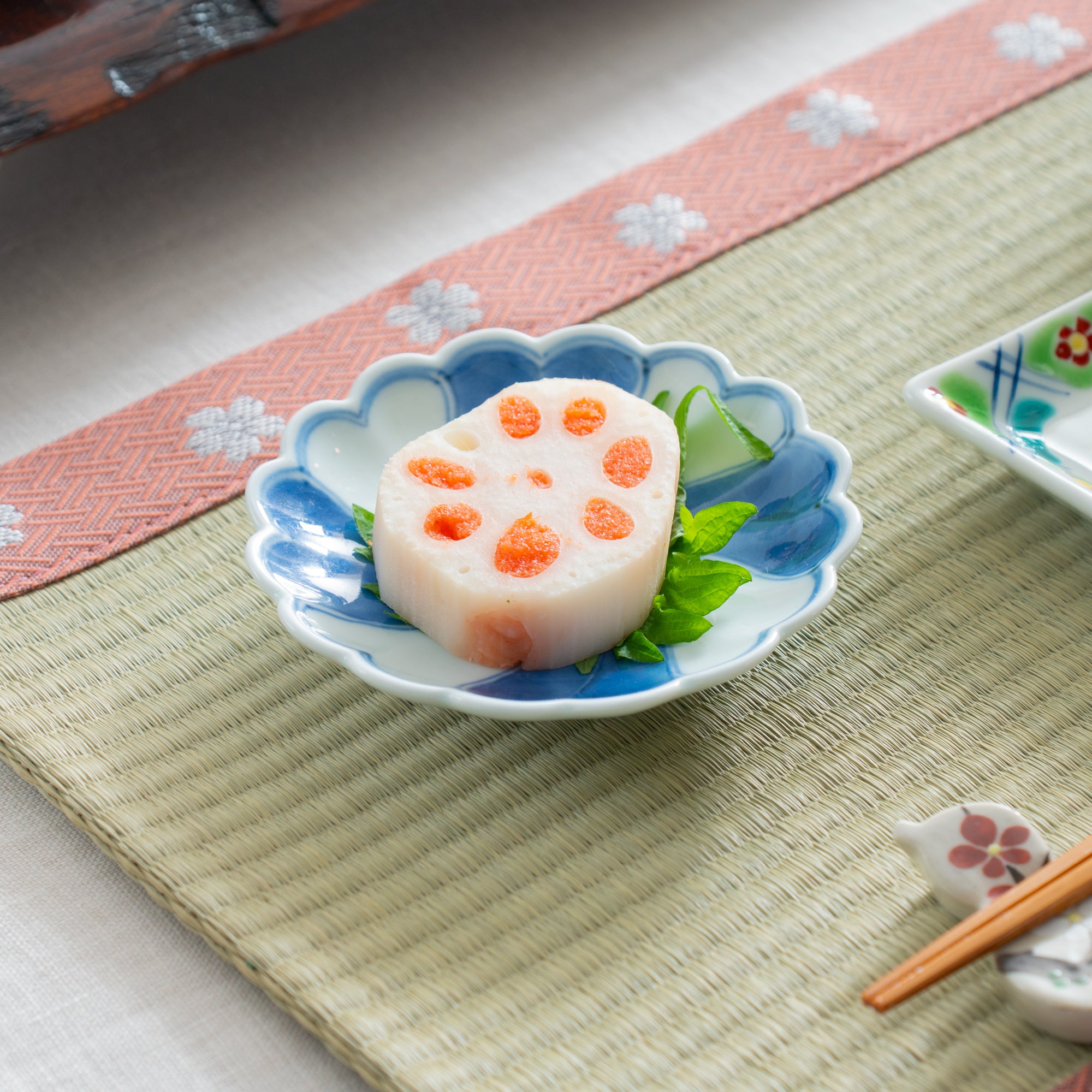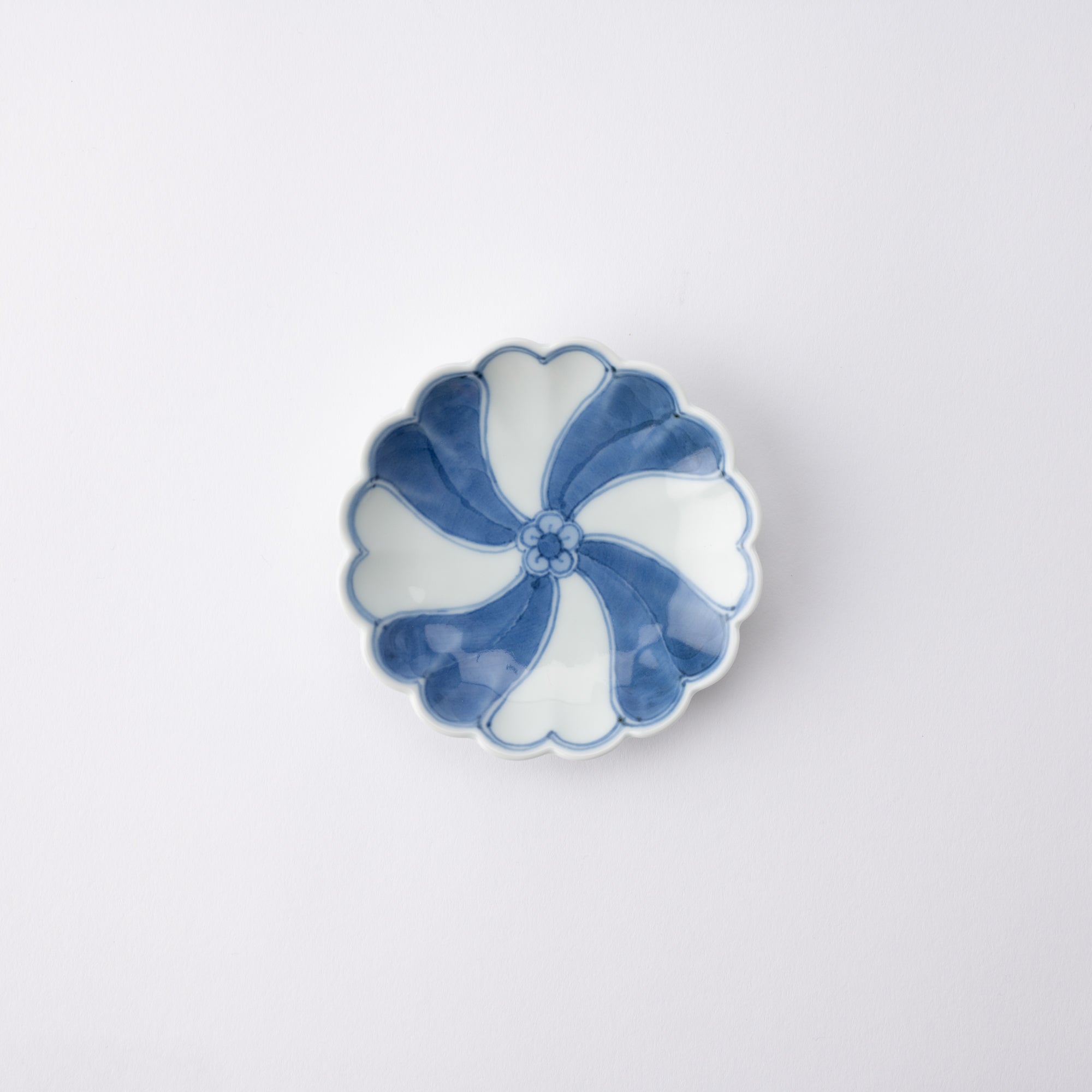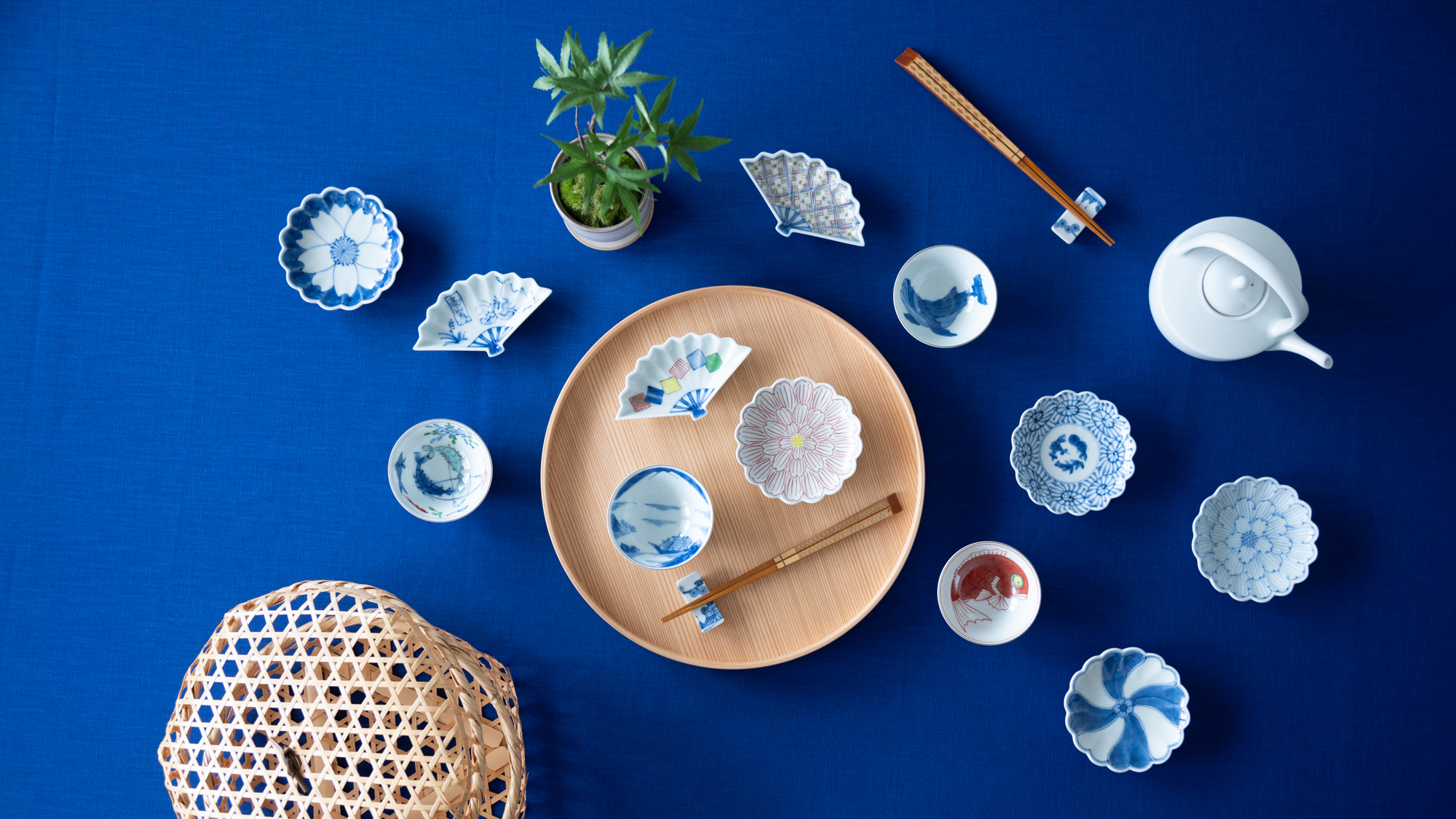
Keizan Kiln
Keizan kiln, named after "Keizan" meaning "beautiful mountain," is a manufacturer of Arita Ware established in 1957 beside a beautiful valley with a clear stream. The kiln was founded in 1957 by a master ceramic artist in a place where the traditional Arita porcelain industry has continued for 400 years.
Keizan kiln, a manufacturer of Arita Ware, a traditional porcelain arts from Saga Prefecture, specializes in Sometsuke, a blue underglaze pattern, and colorful overglaze on the clear white porcelain that is characteristic of Arita Ware.
The patterns are all hand-drawn by the craftsmen, and the vibrant drawings, especially the marine creatures, are especially remarkable. The clear white porcelain that reflects the decoration is made of Amakusa ceramic stone, which is specific to Arita Ware, is very white, durable, and lightweight.
Each piece of the tableware is painted by hand, and even the same design has a different expression, giving an atmospheric feel to the craftsmen's sensibility. Also Keizan kiln's products are designed so that the overall balance of the dish can be maintained by serving it, and will enhance the quality of your daily dining experience.
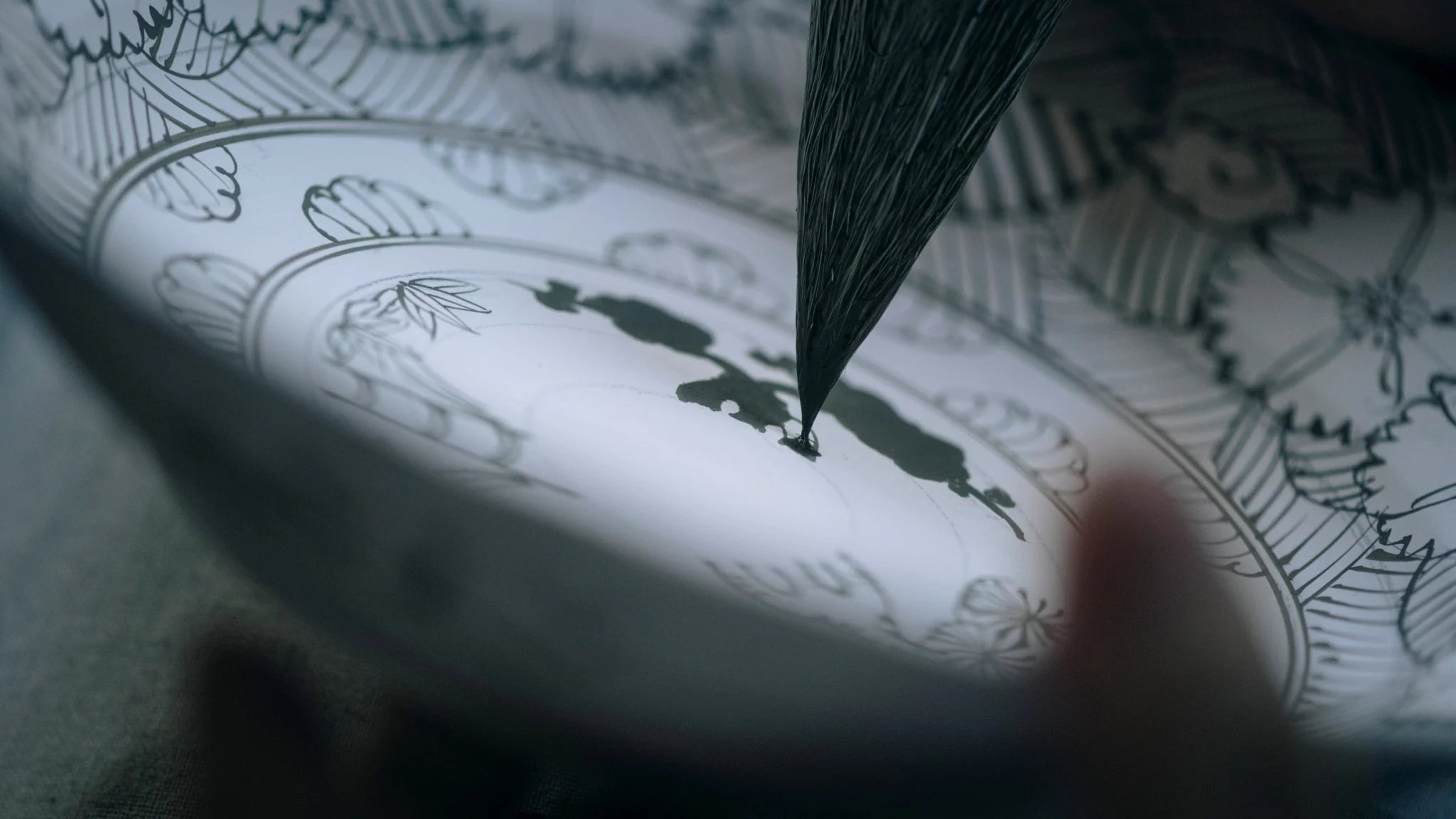
Production Process
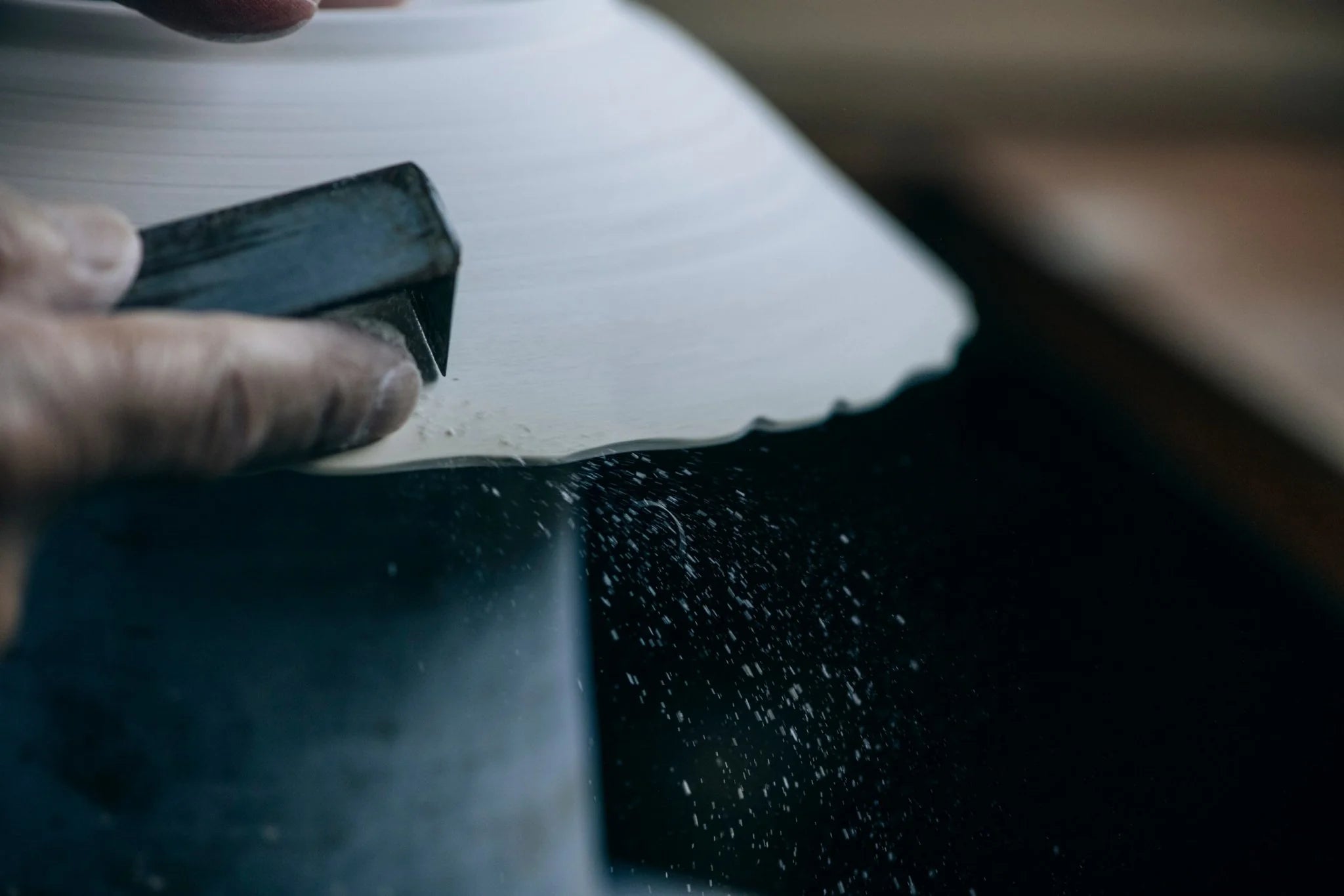
1. Forming, Carving
Amakusa ceramic stone, a beautiful white color of itself, is used as the raw material for the porcelain used to make Keizan kiln tableware.the porcelain clay made by the stone is formed, dried over a long period of time, and then carved into more detailed shapes.
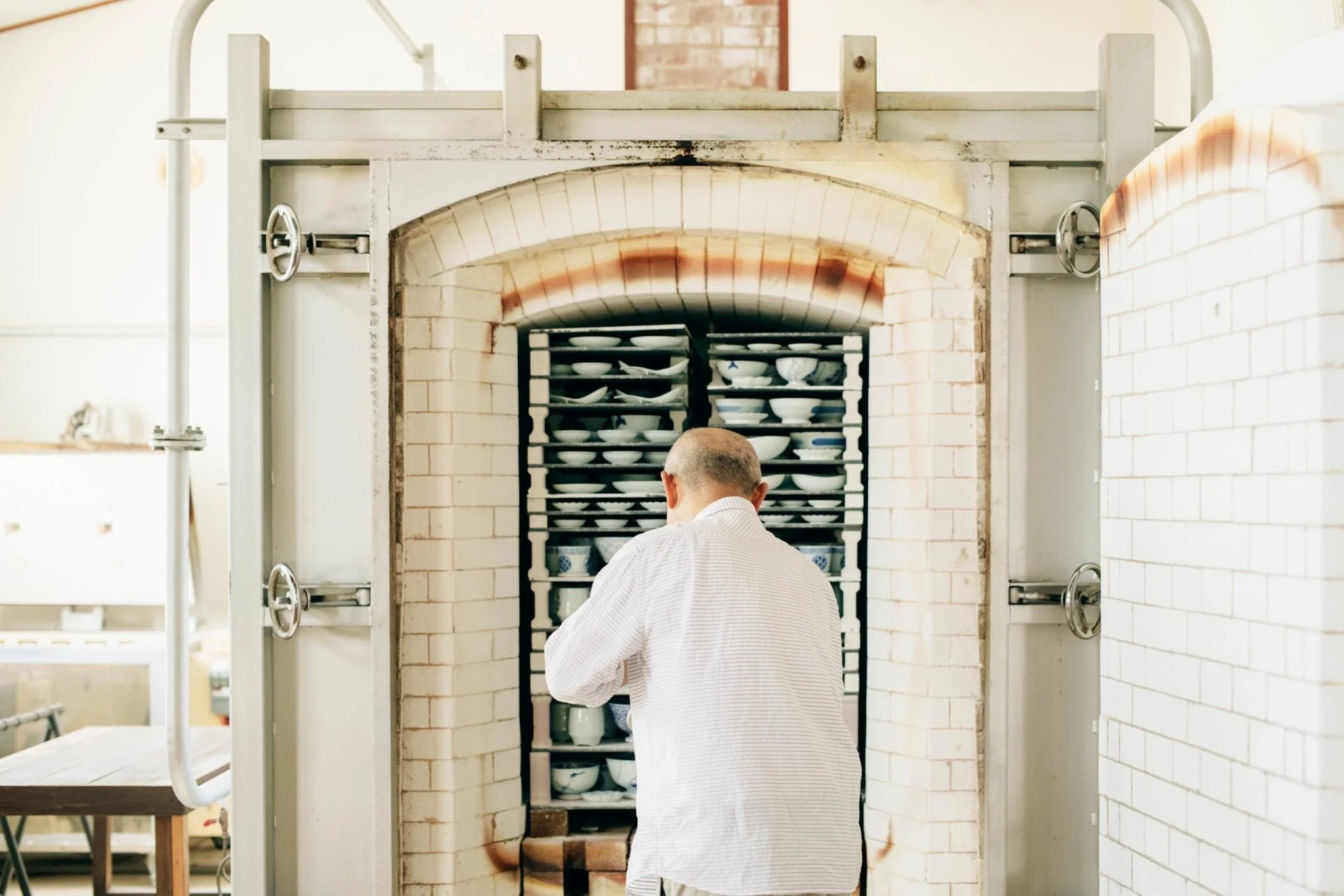
2. Bisque Firing
The dried clay base is fired at approximately 900°C (1652°F). After bisque firing, the clay becomes stronger and absorbs more water, making underglazing and glazing easier.
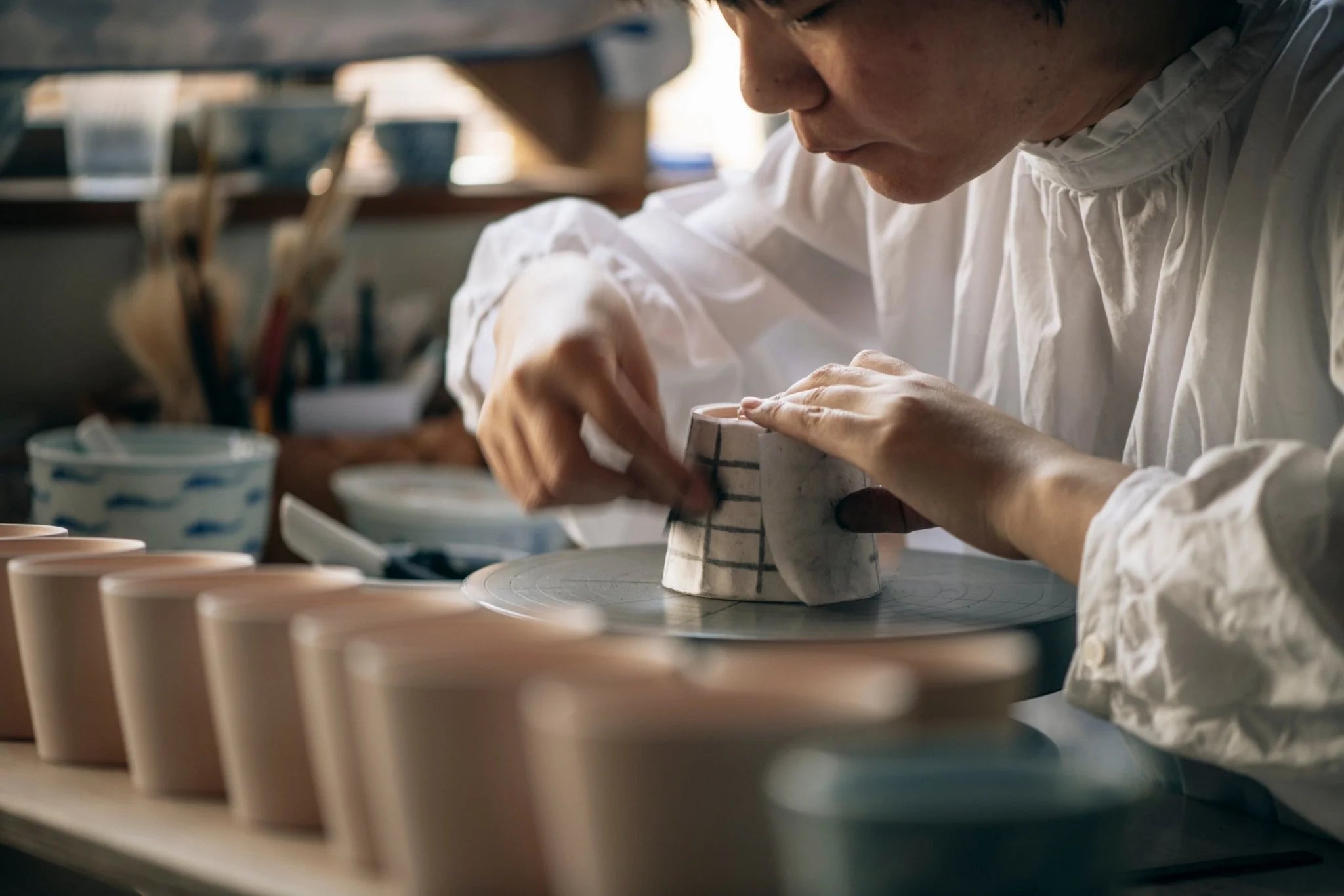
3. "Nakadachi"
In this process, Keizan kiln's original design is drafted in Sumi ink on thin Japanese paper, which is then rubbed onto the surface of the work to transfer it. Sumi ink does not remain because it will burn when fired.
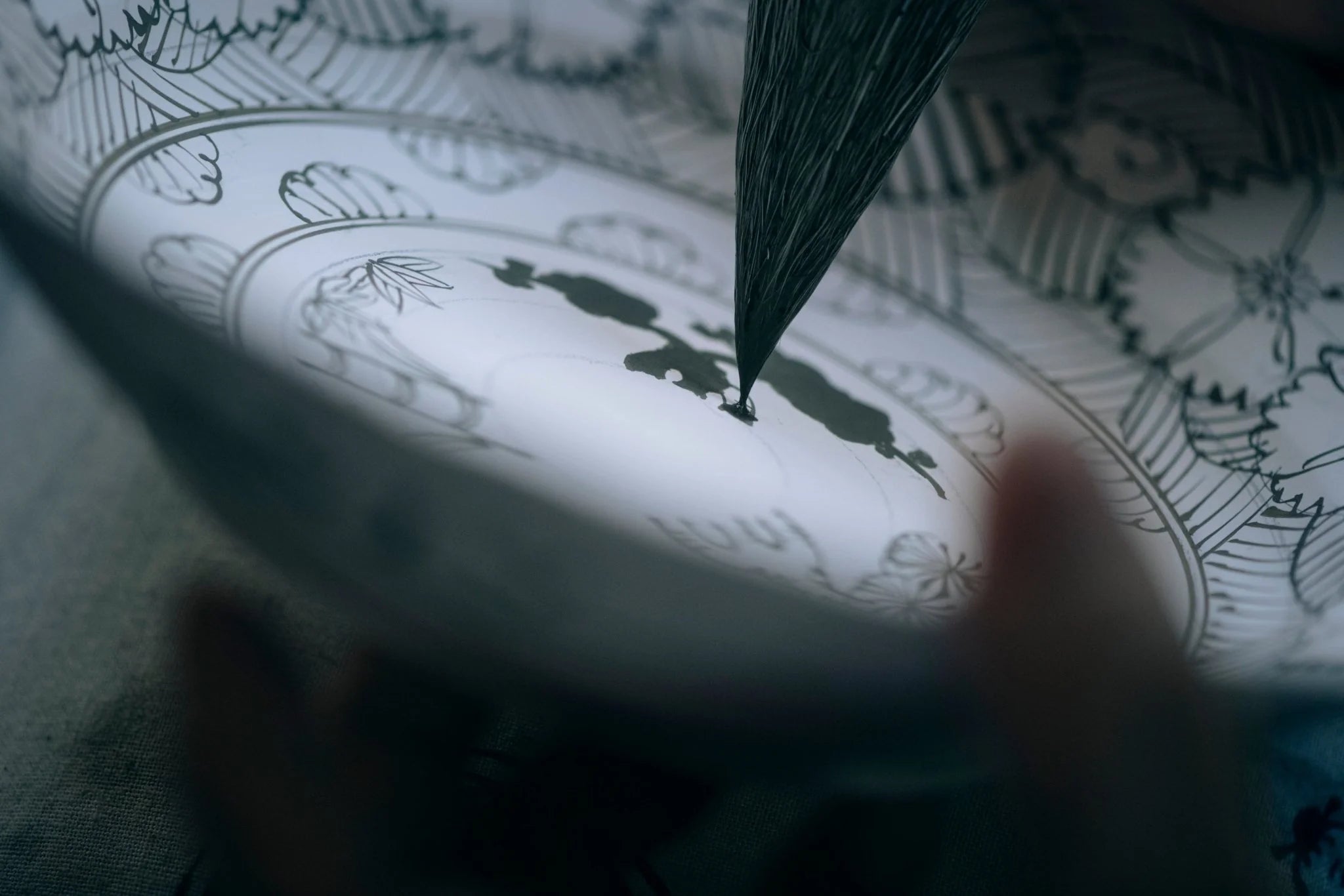
4. Underglazing: "Dami"
The patterns are painted with a cobalt blue underglaze called “Gosu". First, a thin brush is used to draw the lines, and then a special brush called “Dami" is used to express the color shading. This process requires the most patience, and is also that gives Keizan kiln's products their beautiful charm.
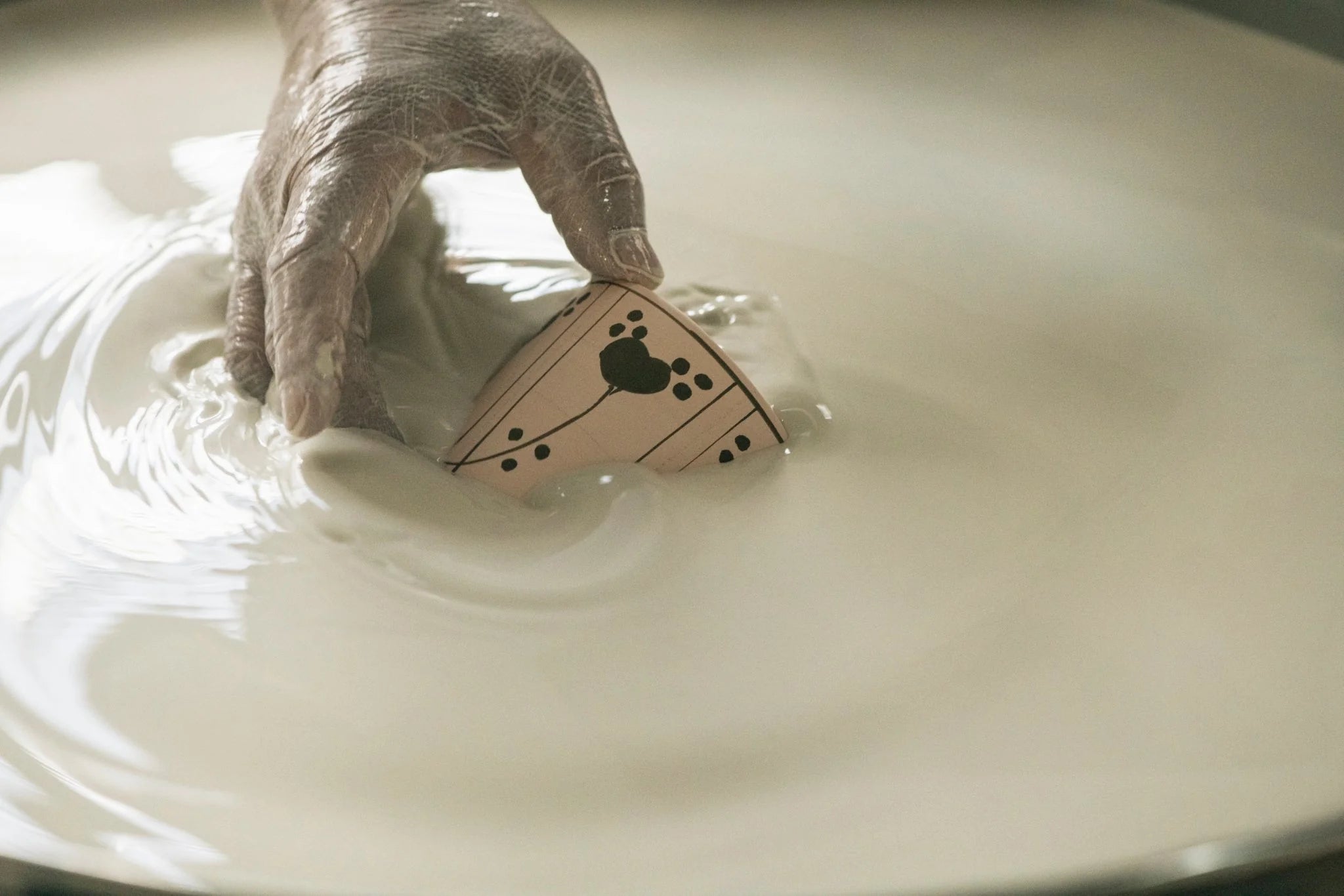
5. Glazing
Glazing determines the color and texture of a piece of porcelain, and the quality of the glaze is what makes the piece appealing. The clear glaze, combined with the underglaze, gives a variety of expressions that are very pleasing to the eye.
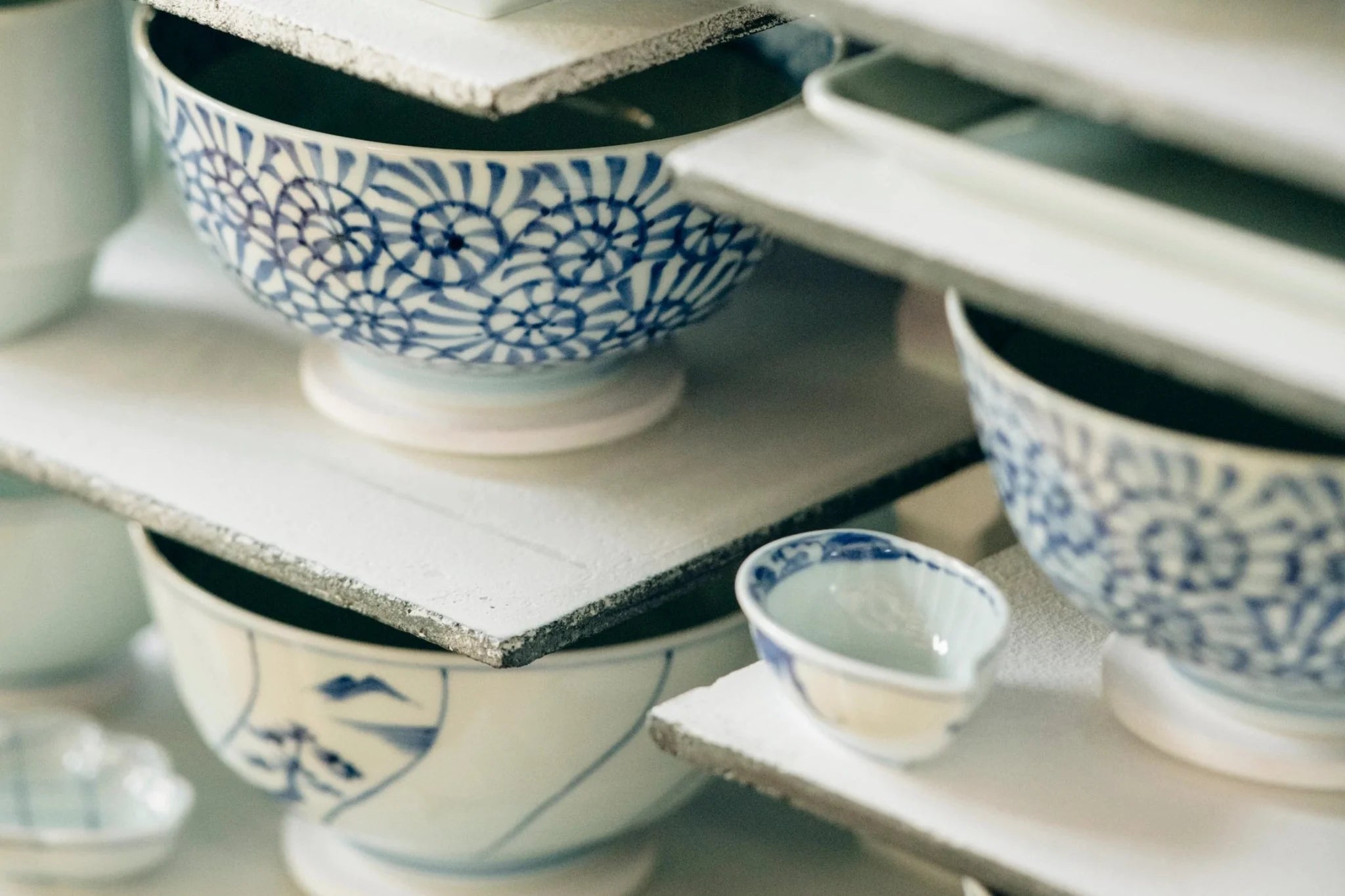
6. High Firing
Secondaly fired at a high temperature of nearly 1300°C (2372°F), the product is hardened. The clay and glaze become semiglassified, resulting in a robust porcelain, and the underglaze develops a translucent blue color.
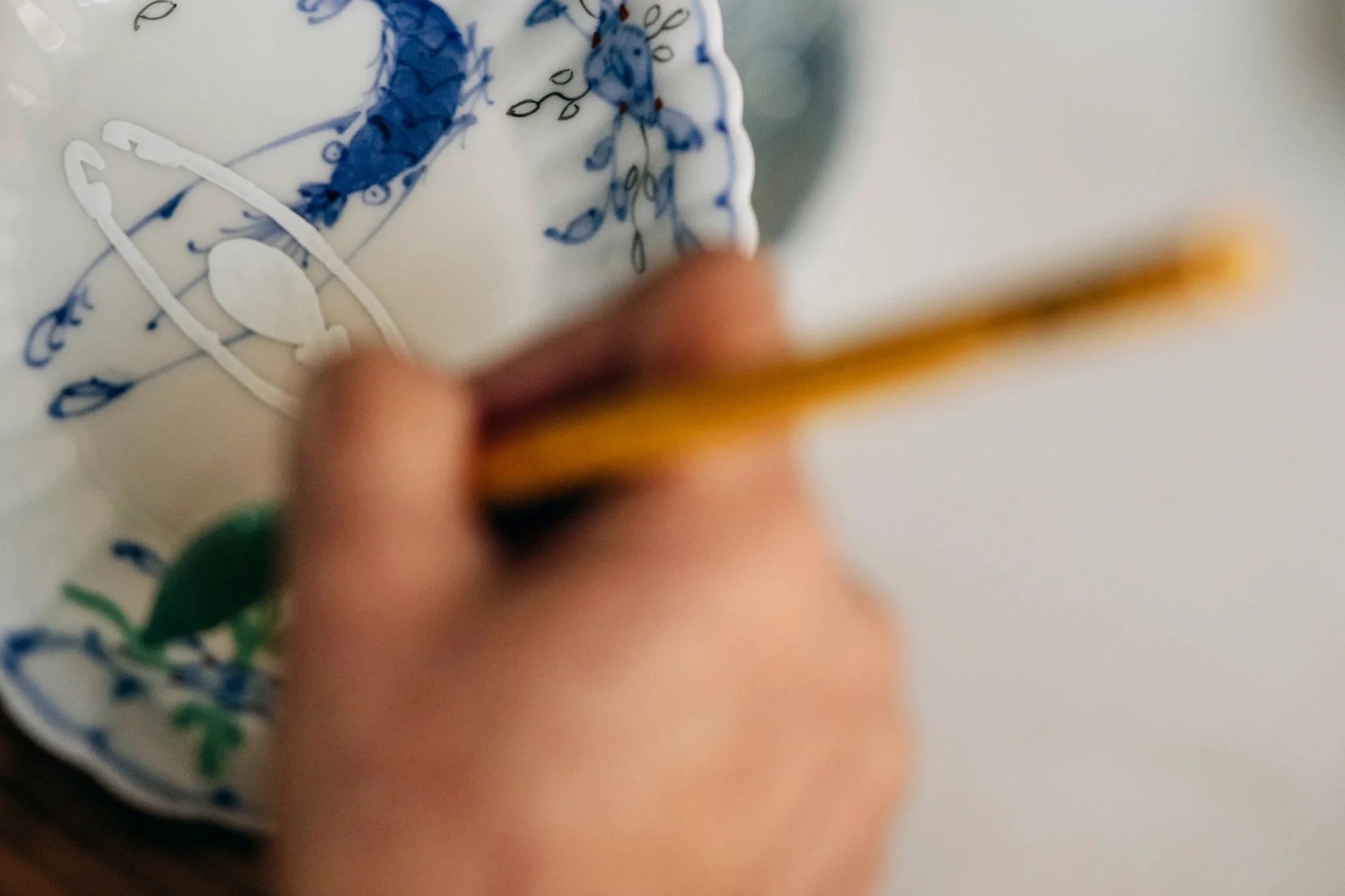
7. Overglazing
Overglazing on the fired porcelain glaze with gorgeous colors such as red, green, and yellow using traditional Arita Ware techniques. Finally, the overglazed works are baked at a low temperature to complete the beautiful Keizan kiln's Arita porcelain.
Related posts
Filters


